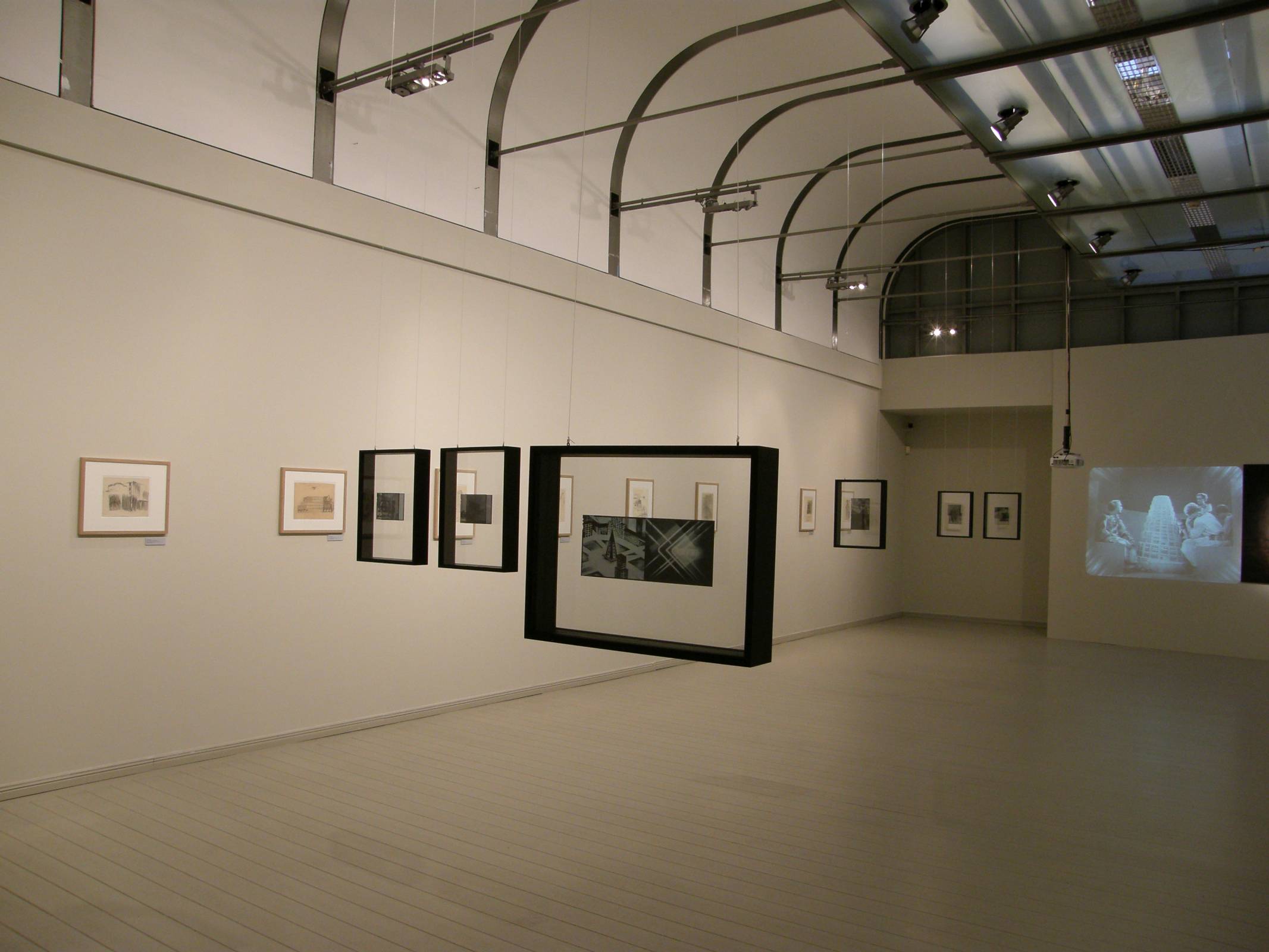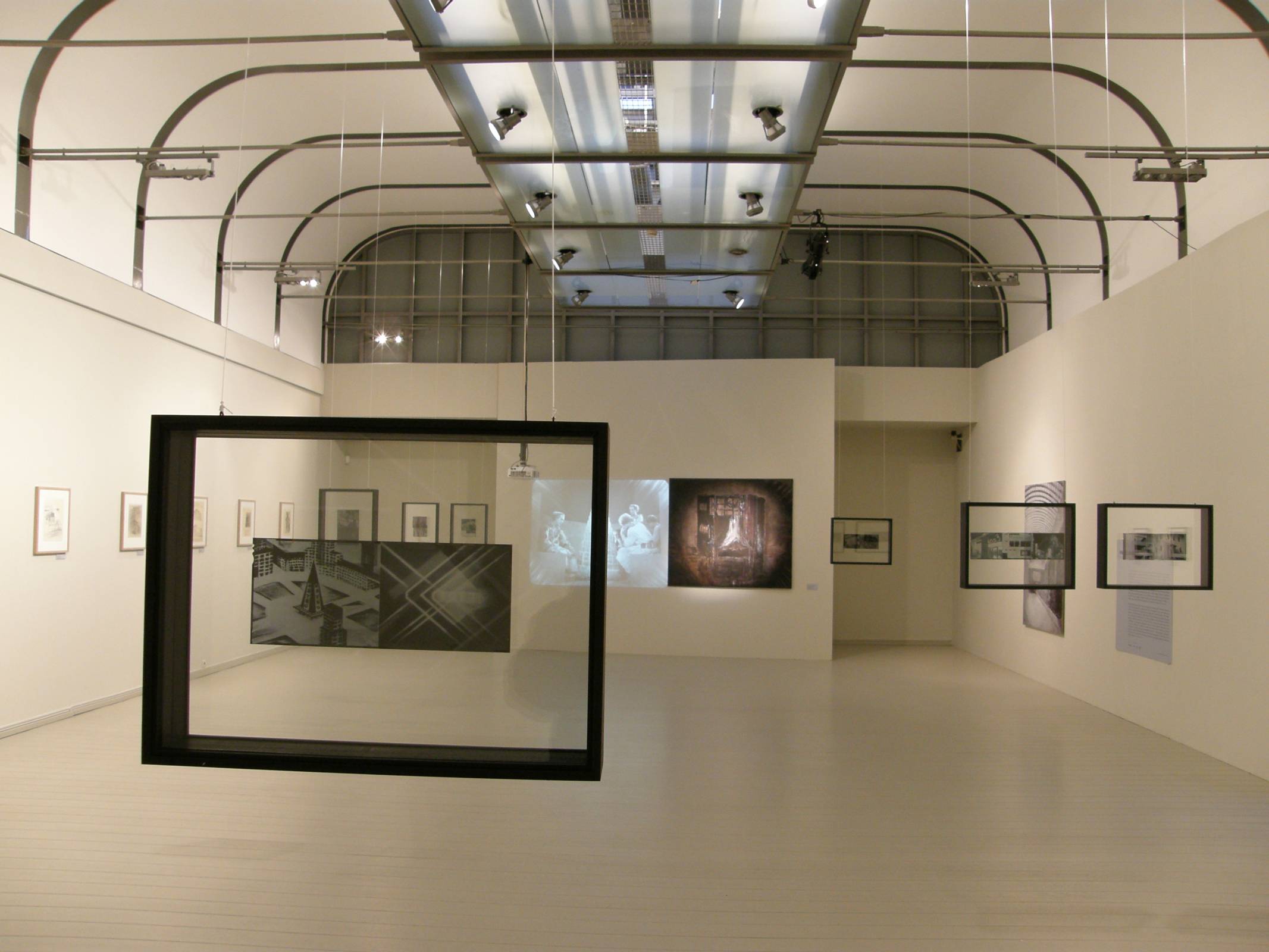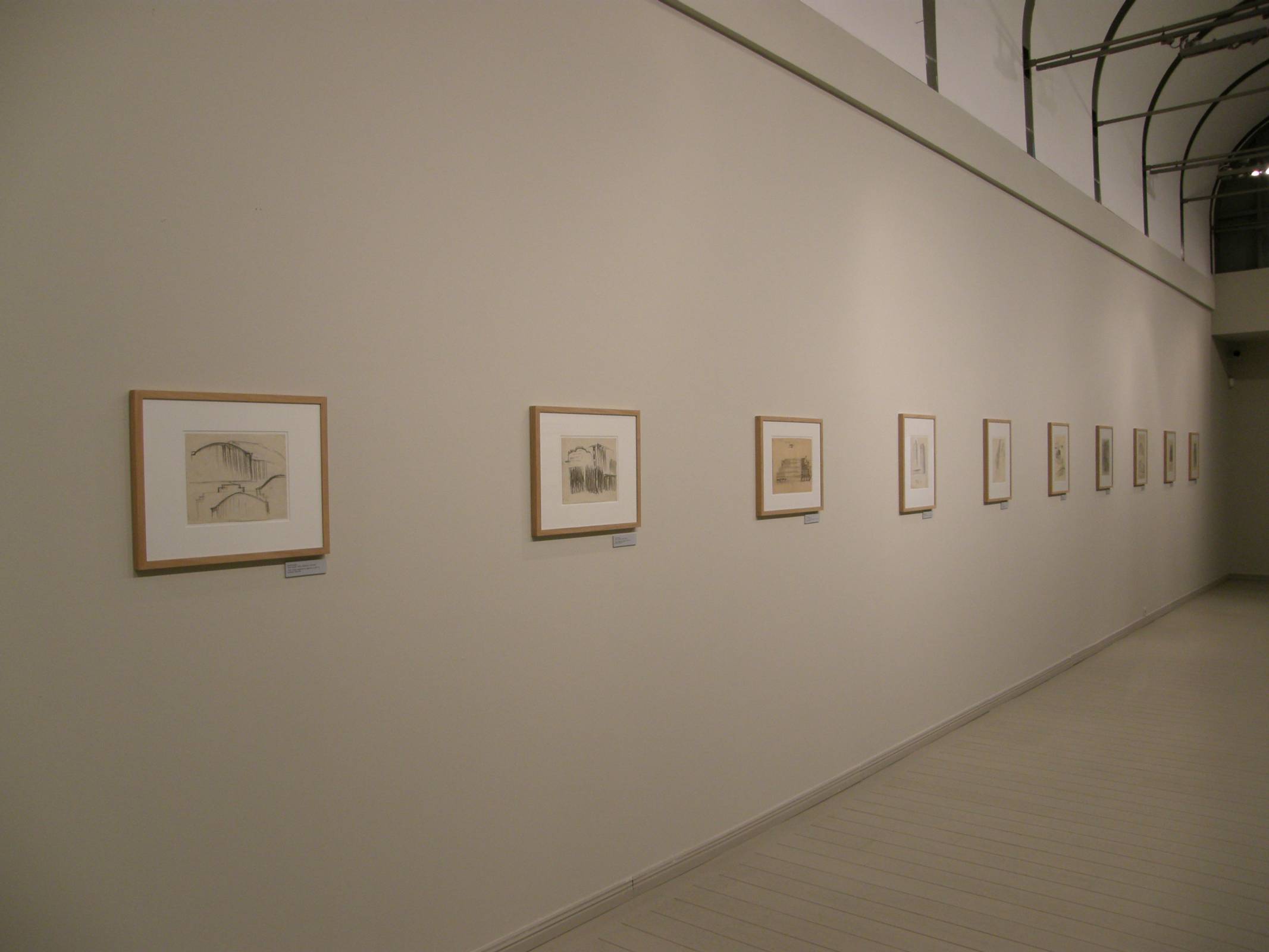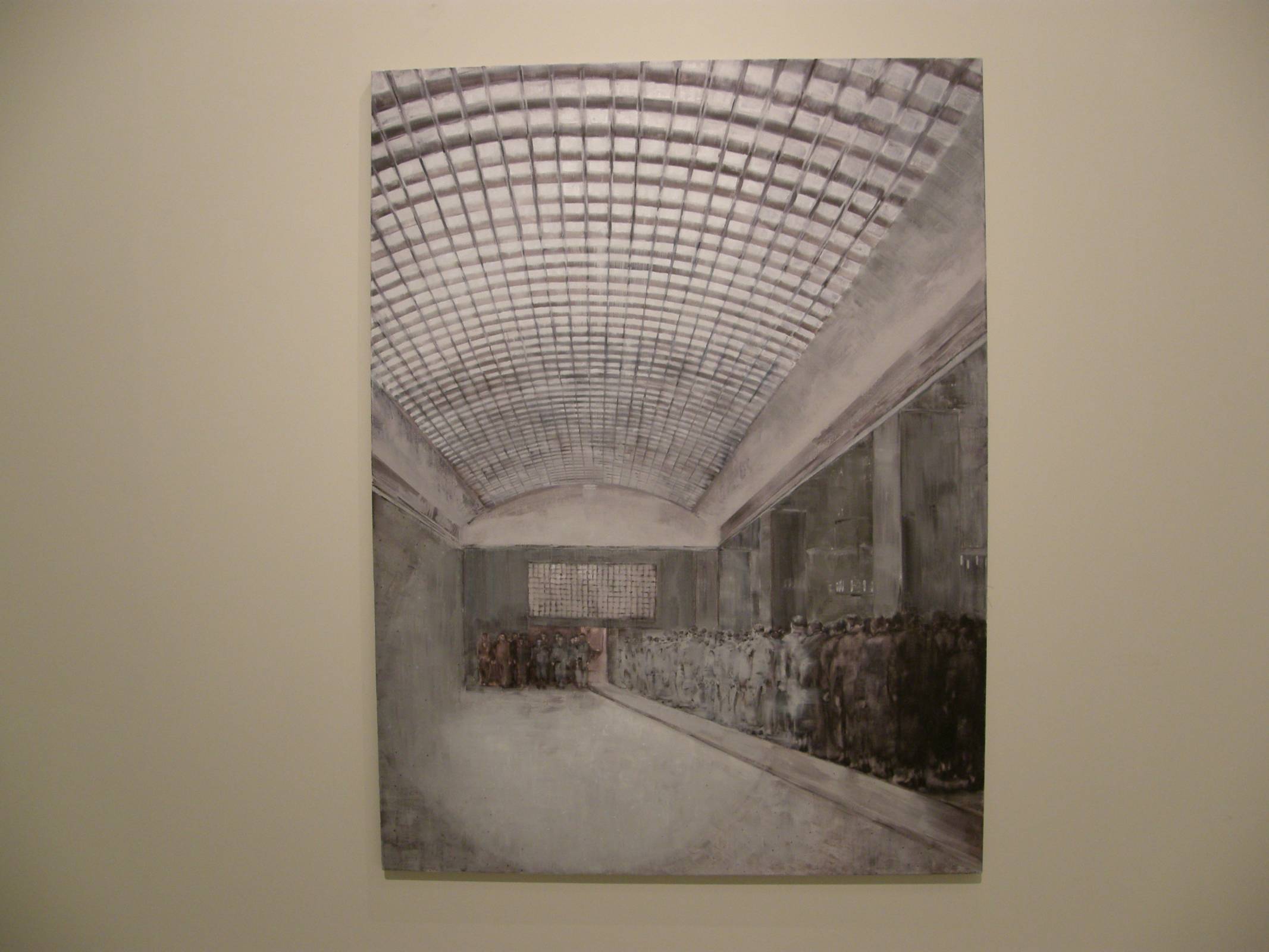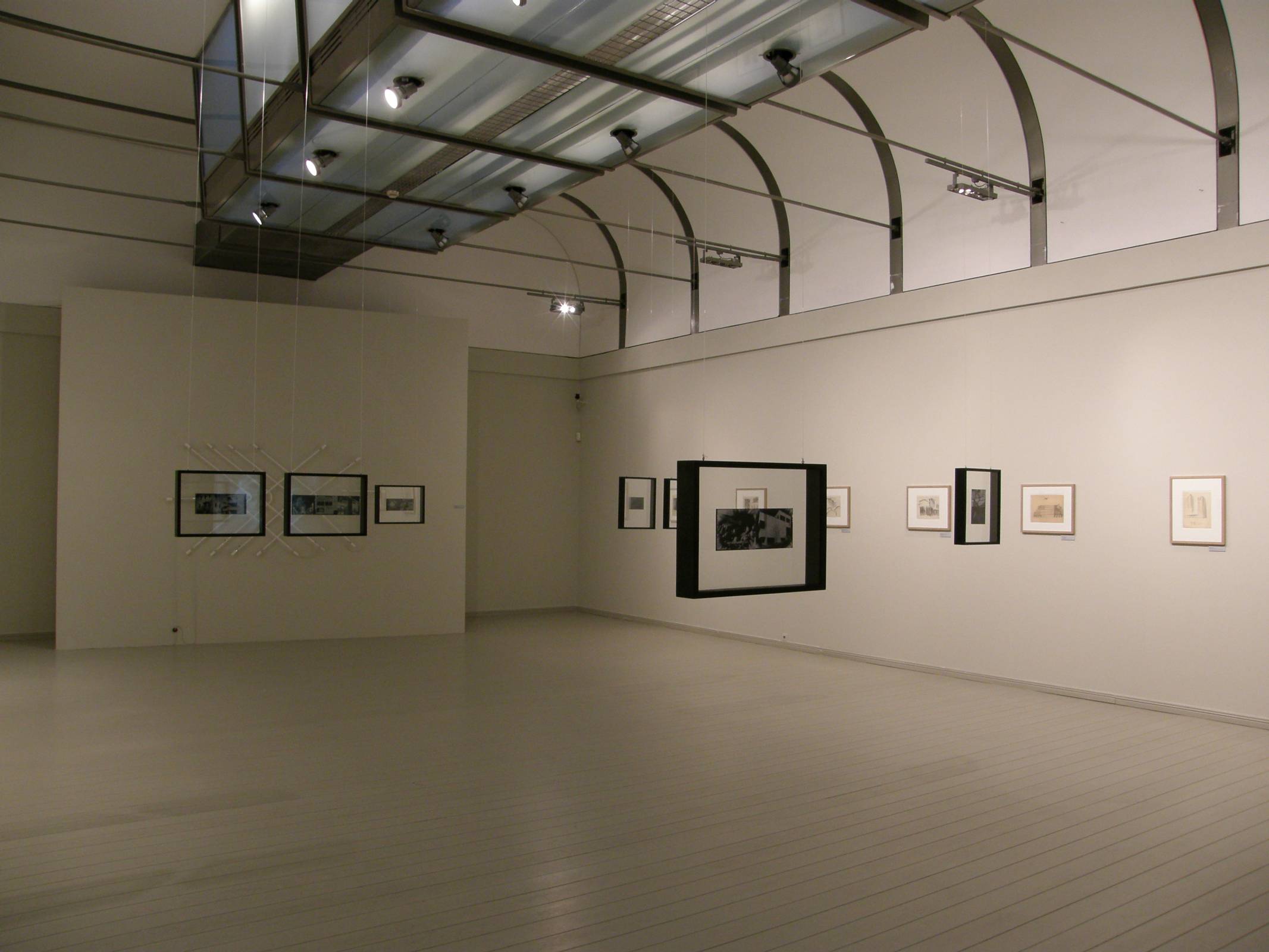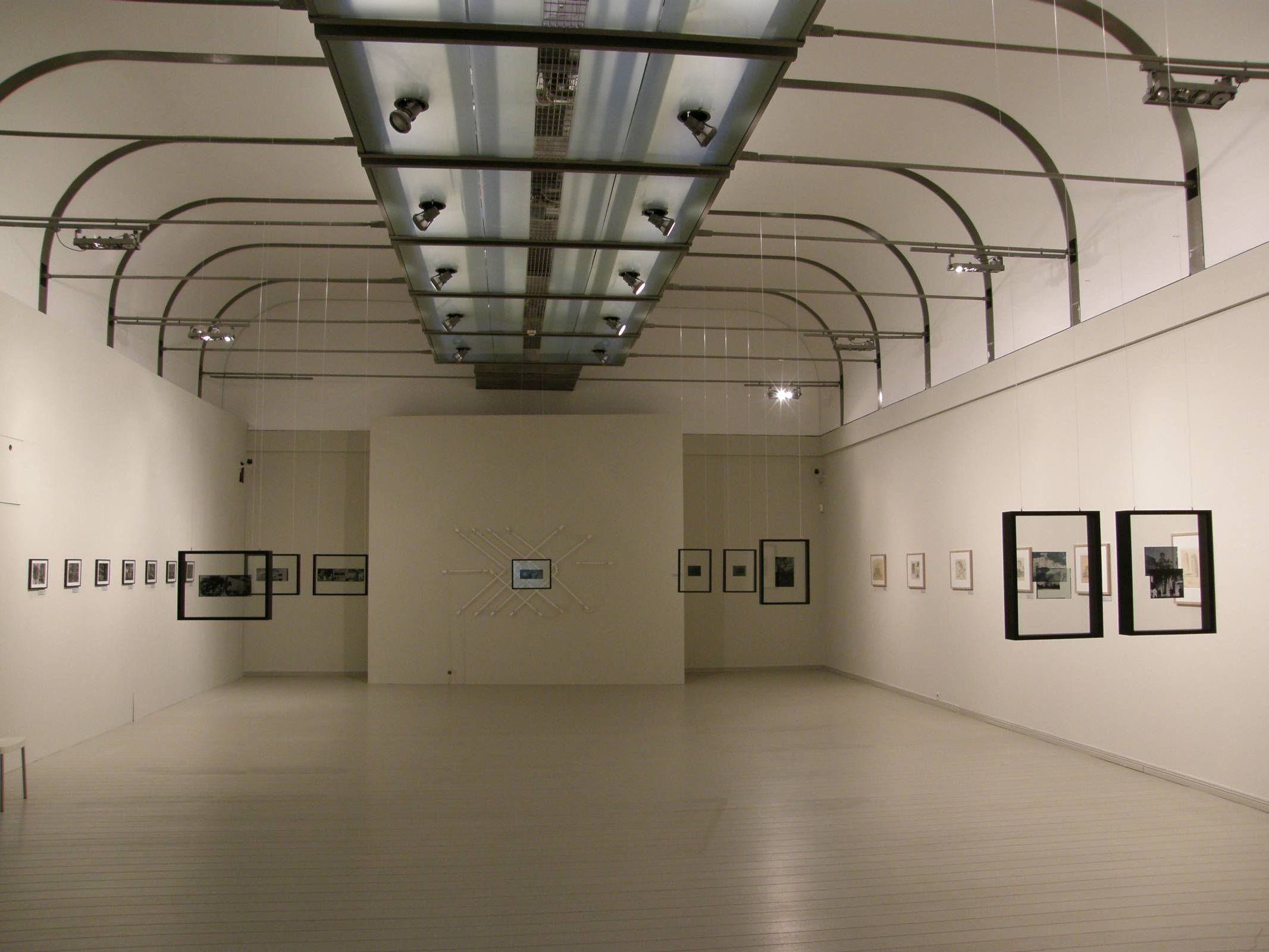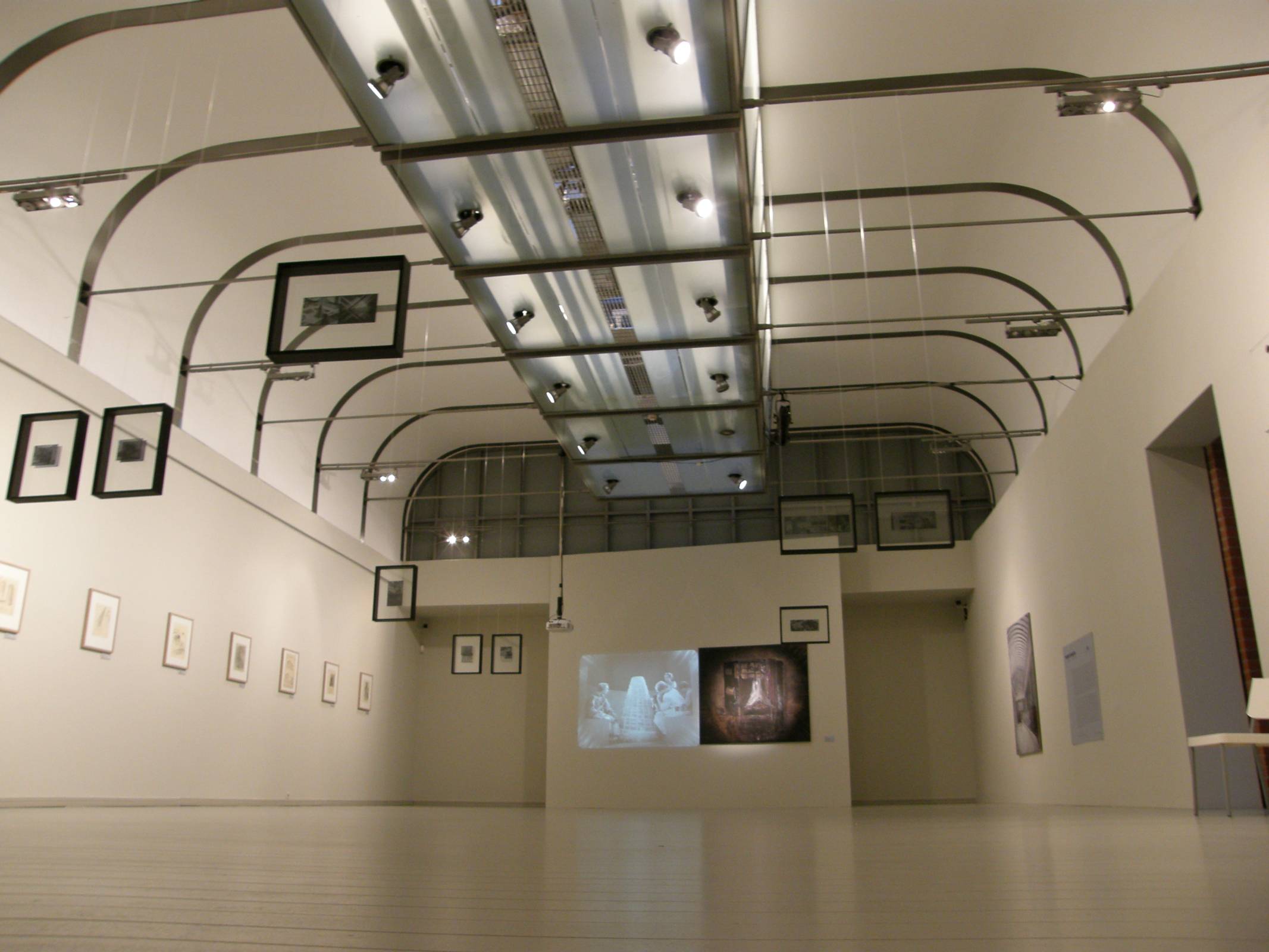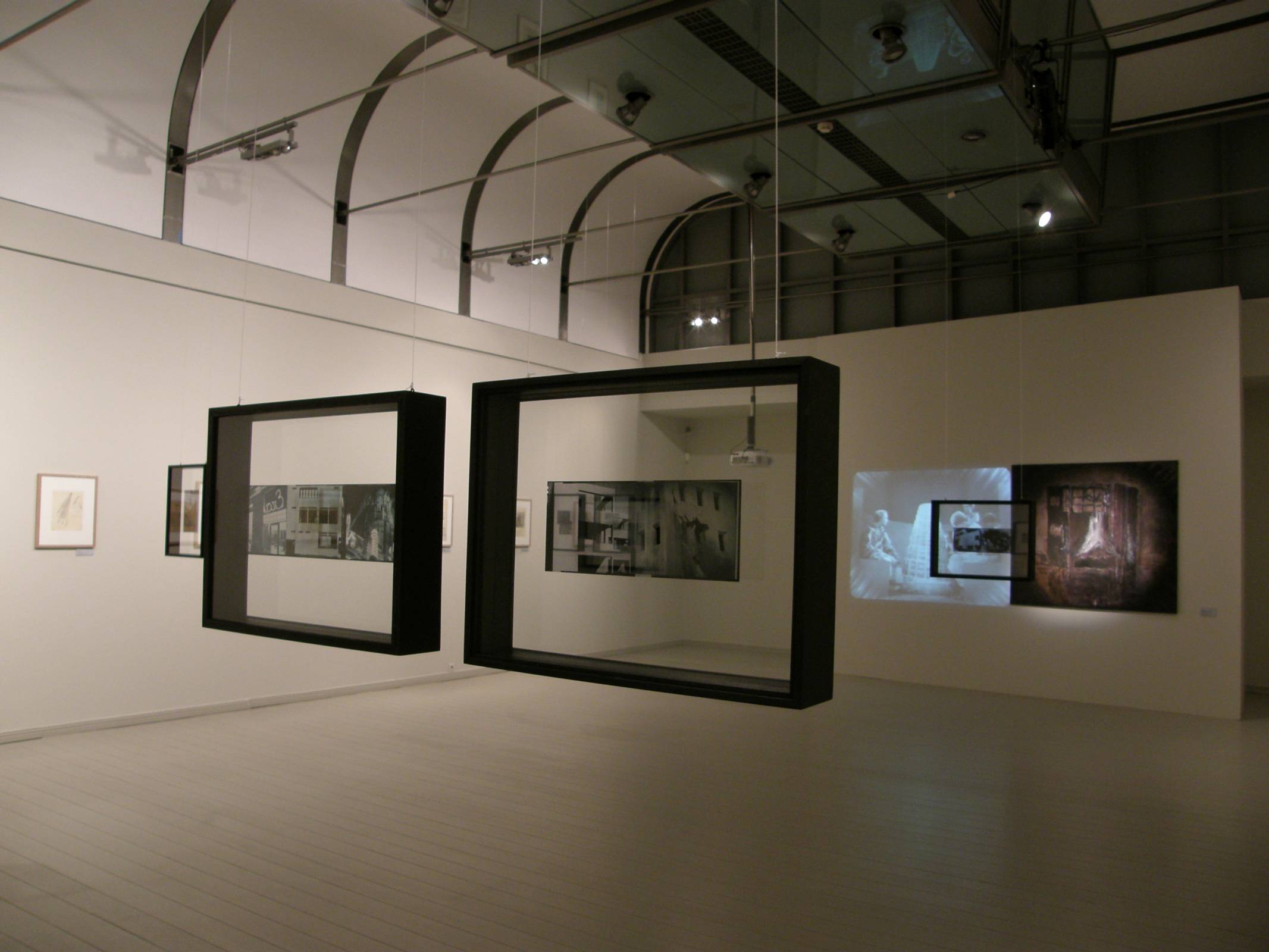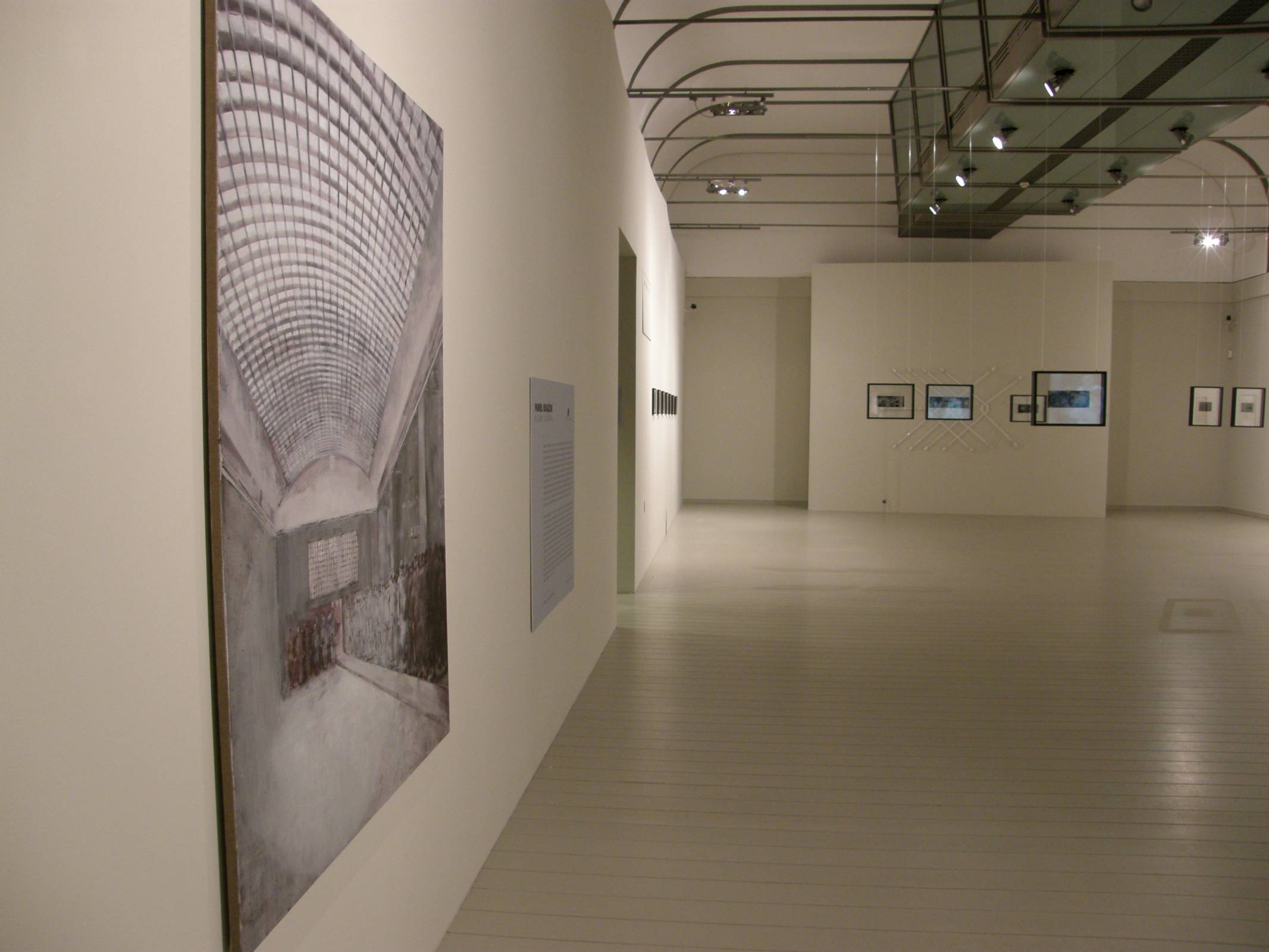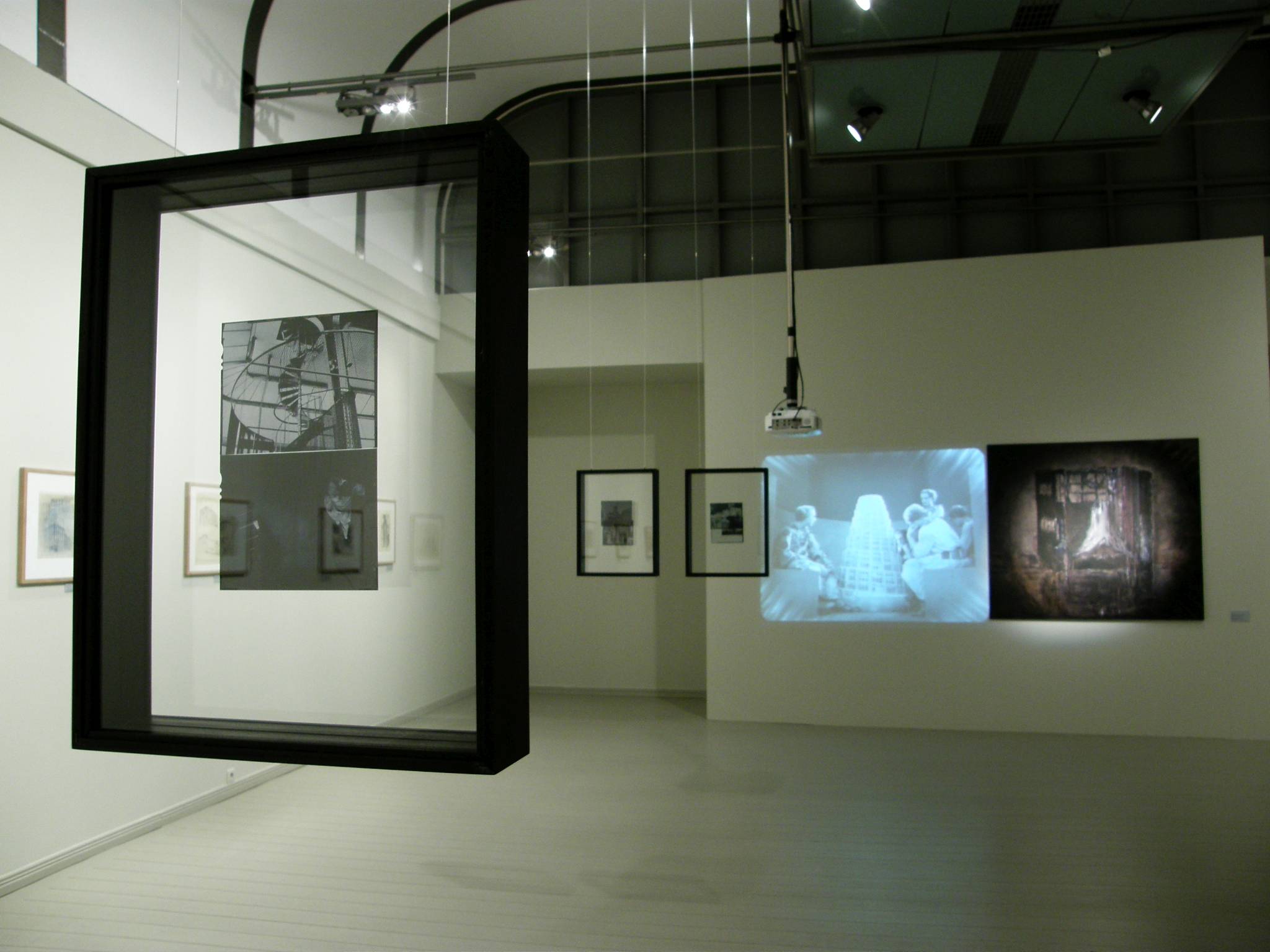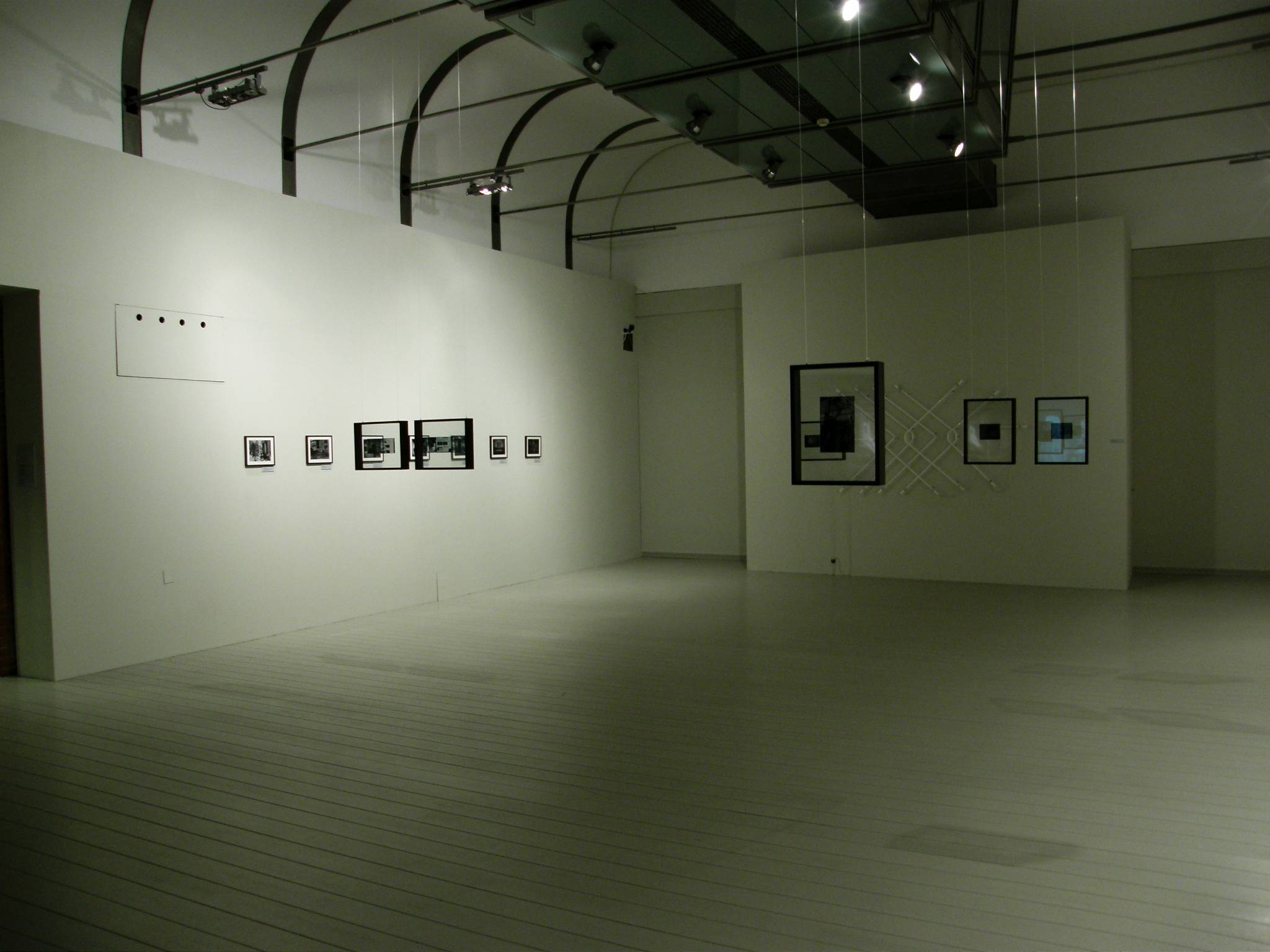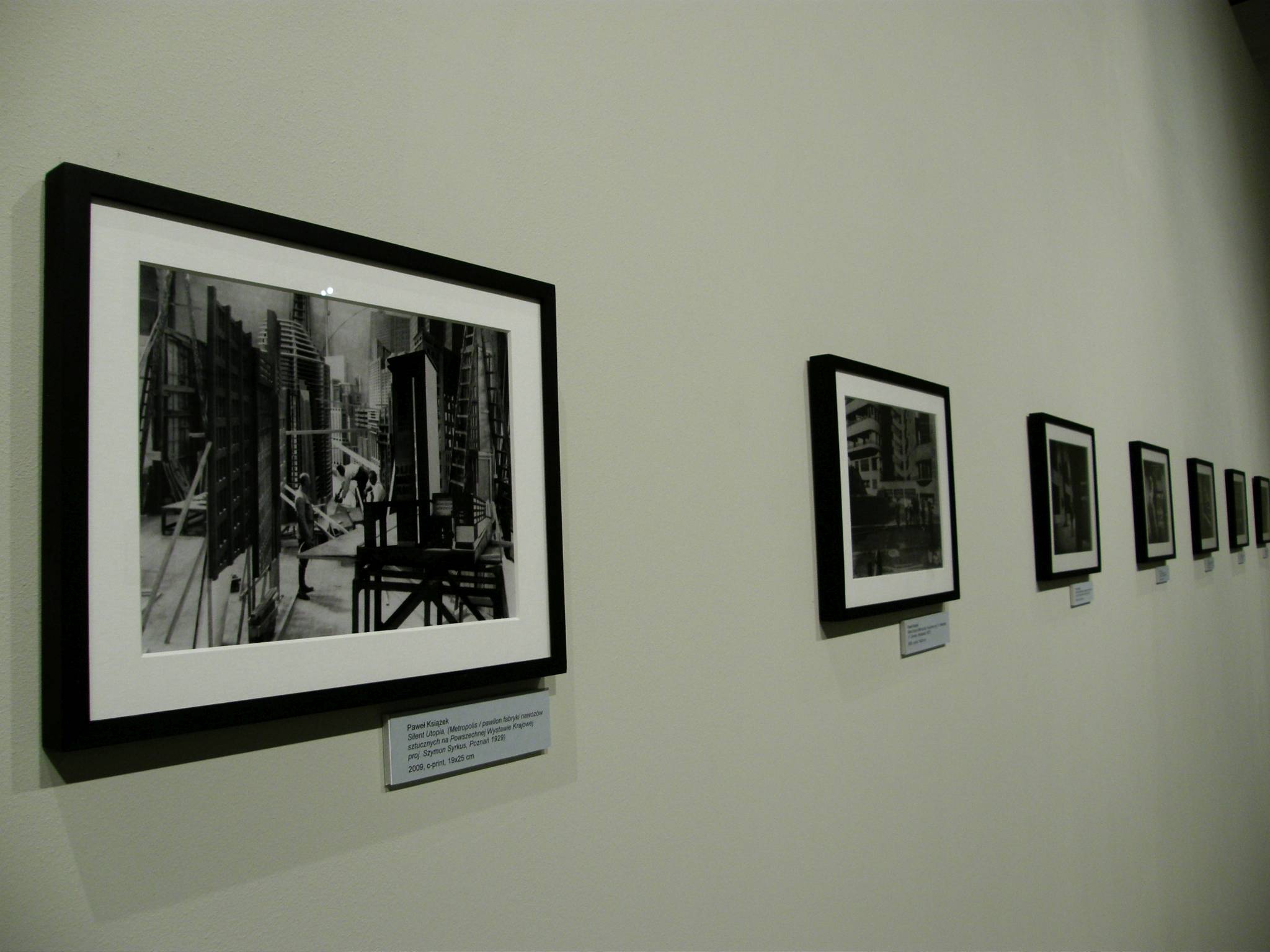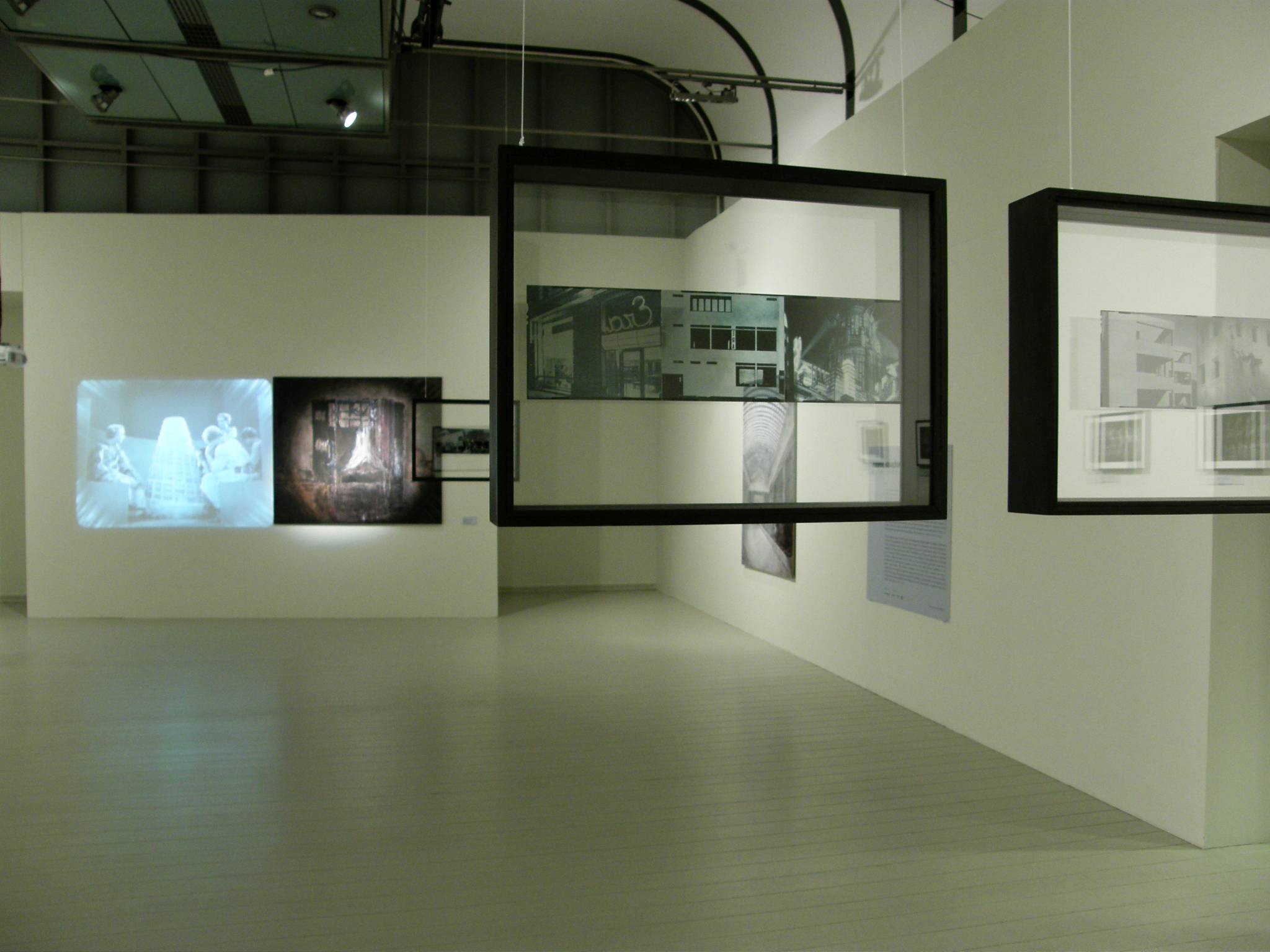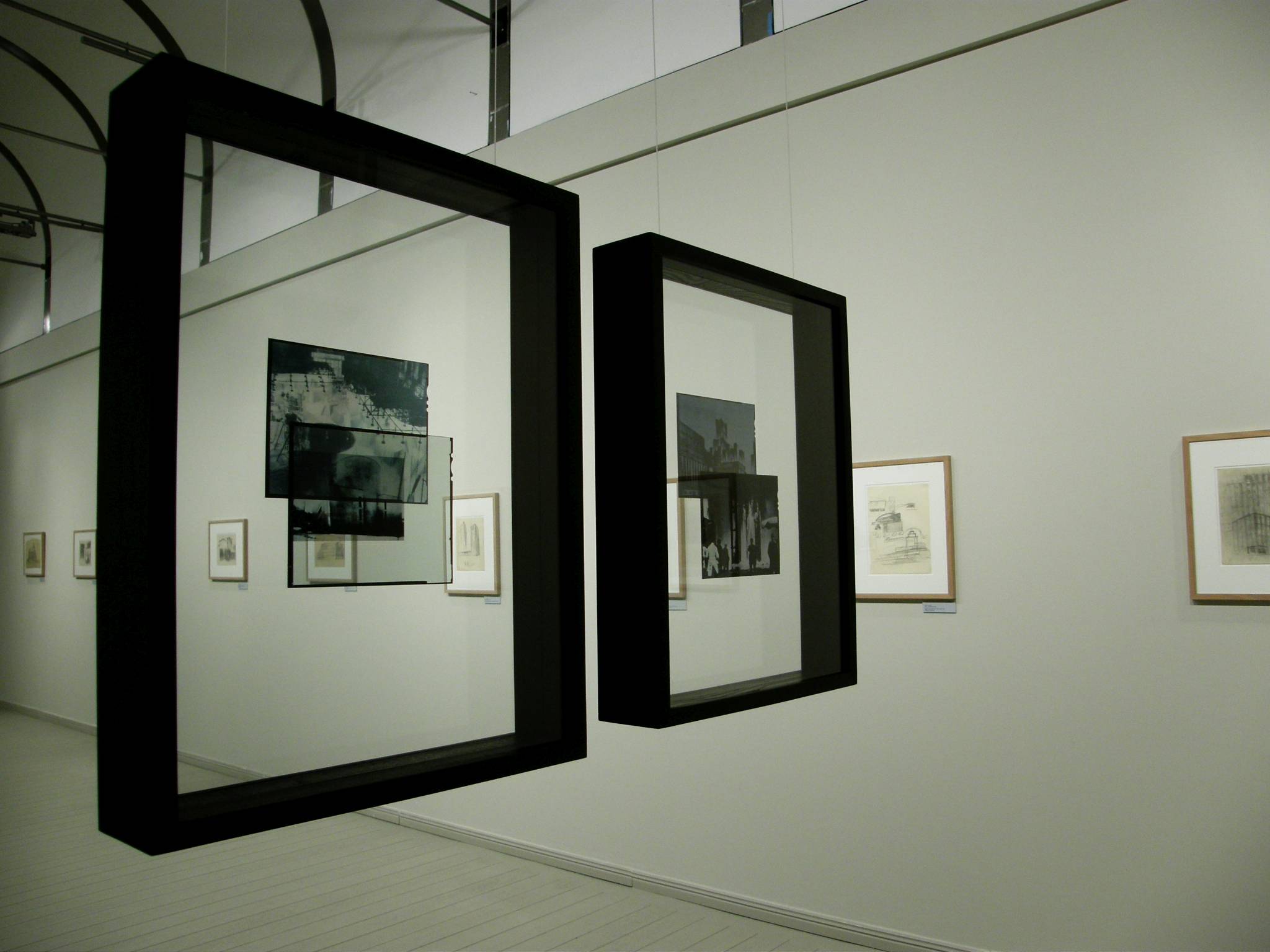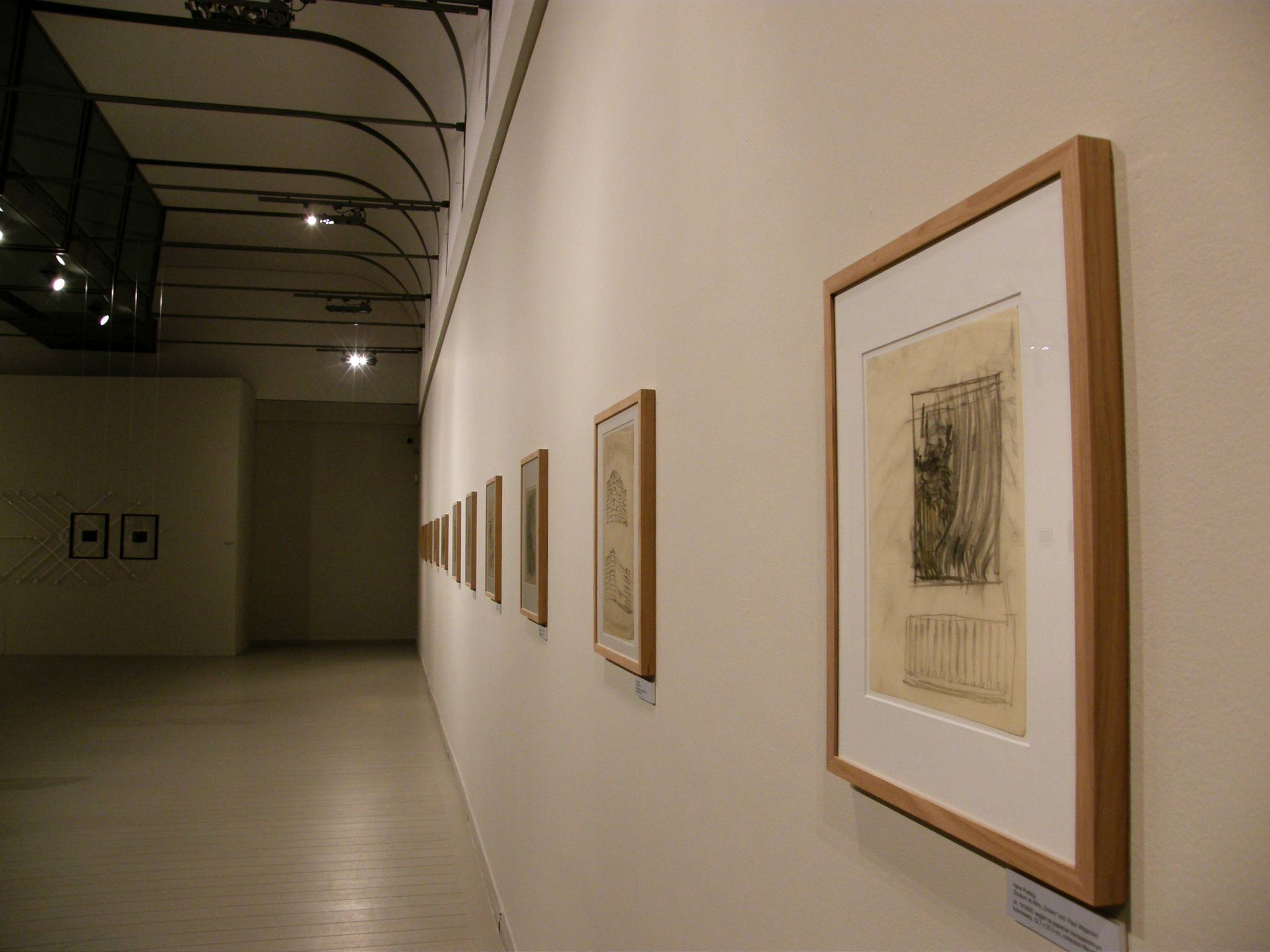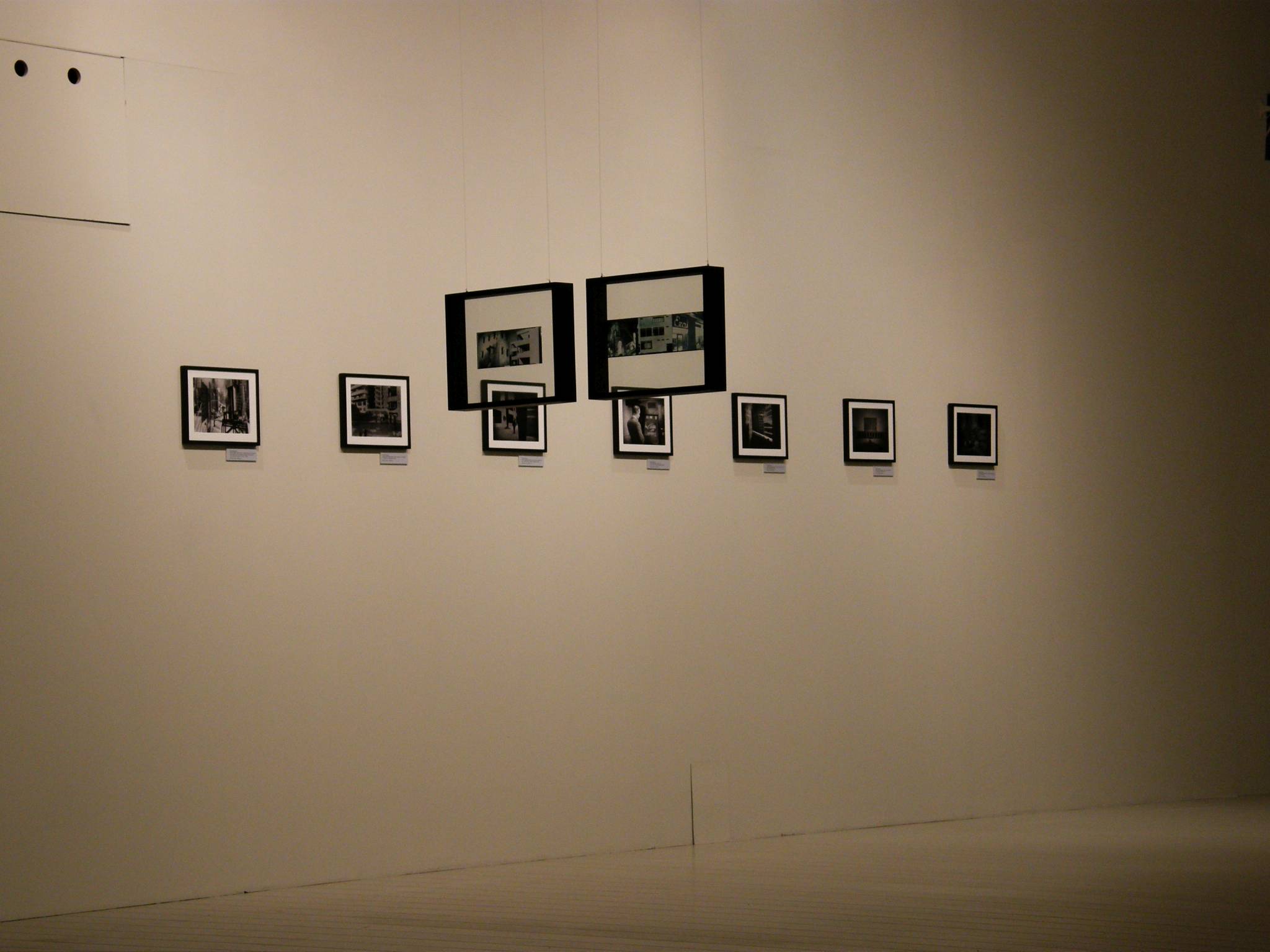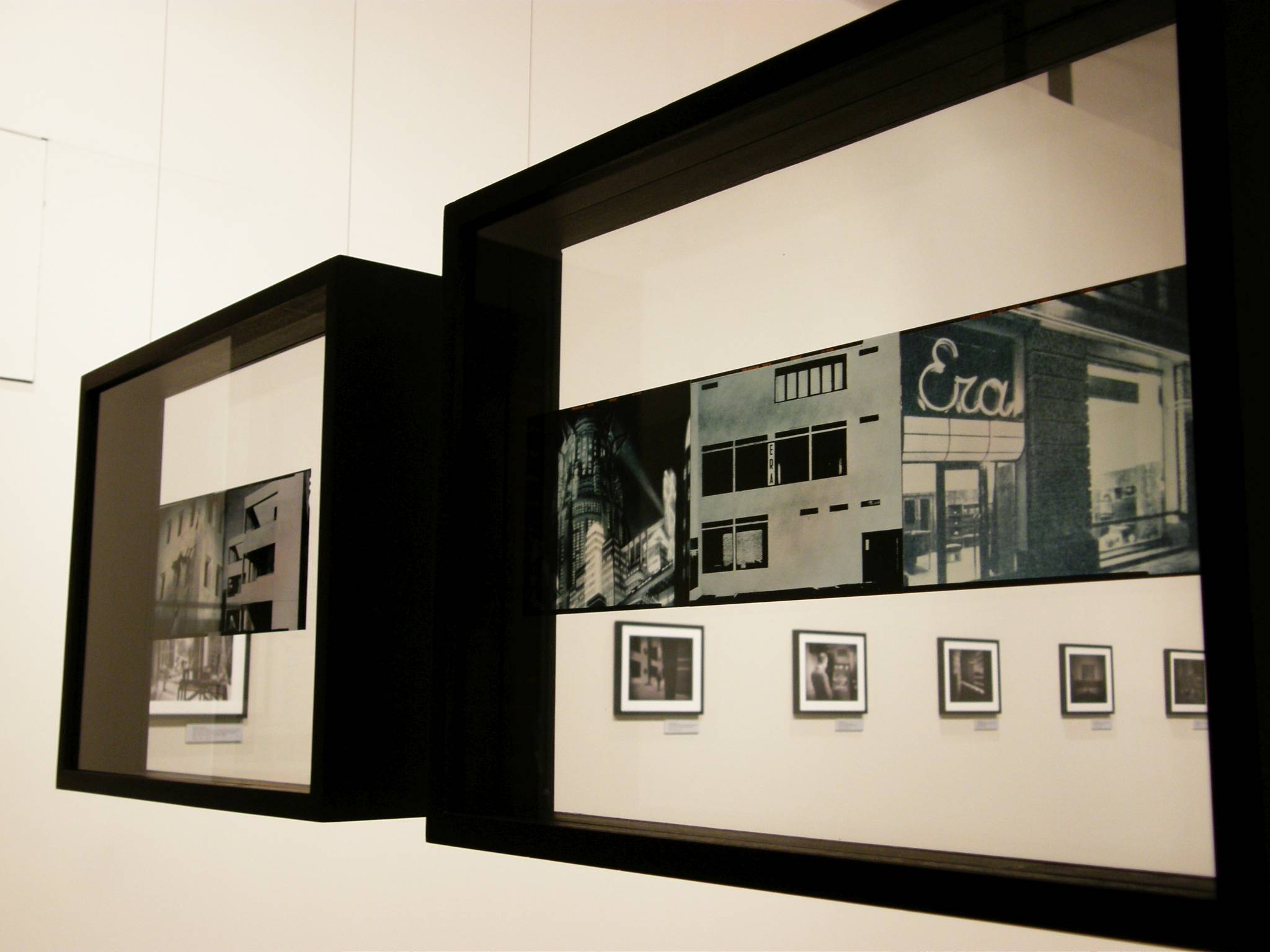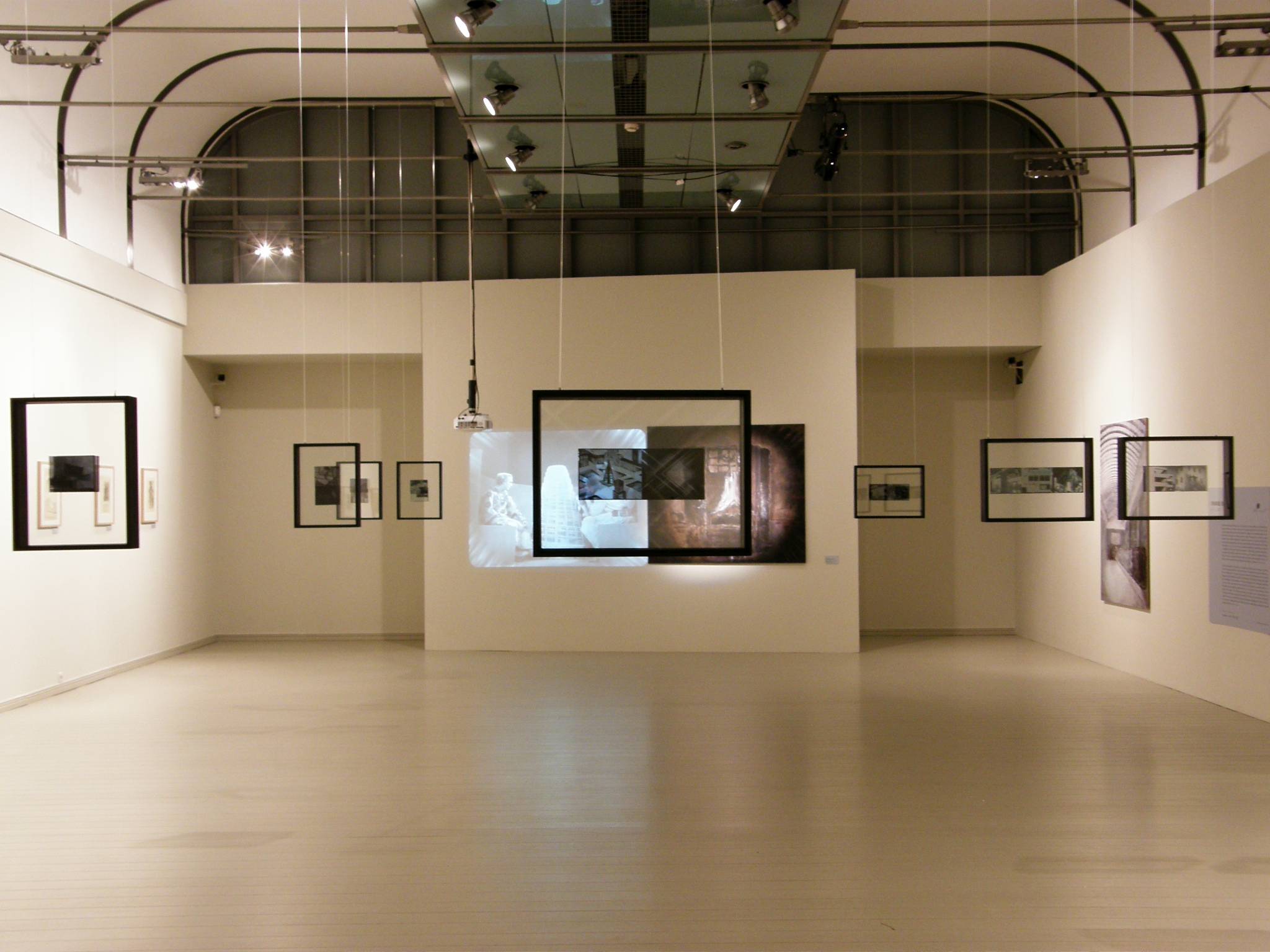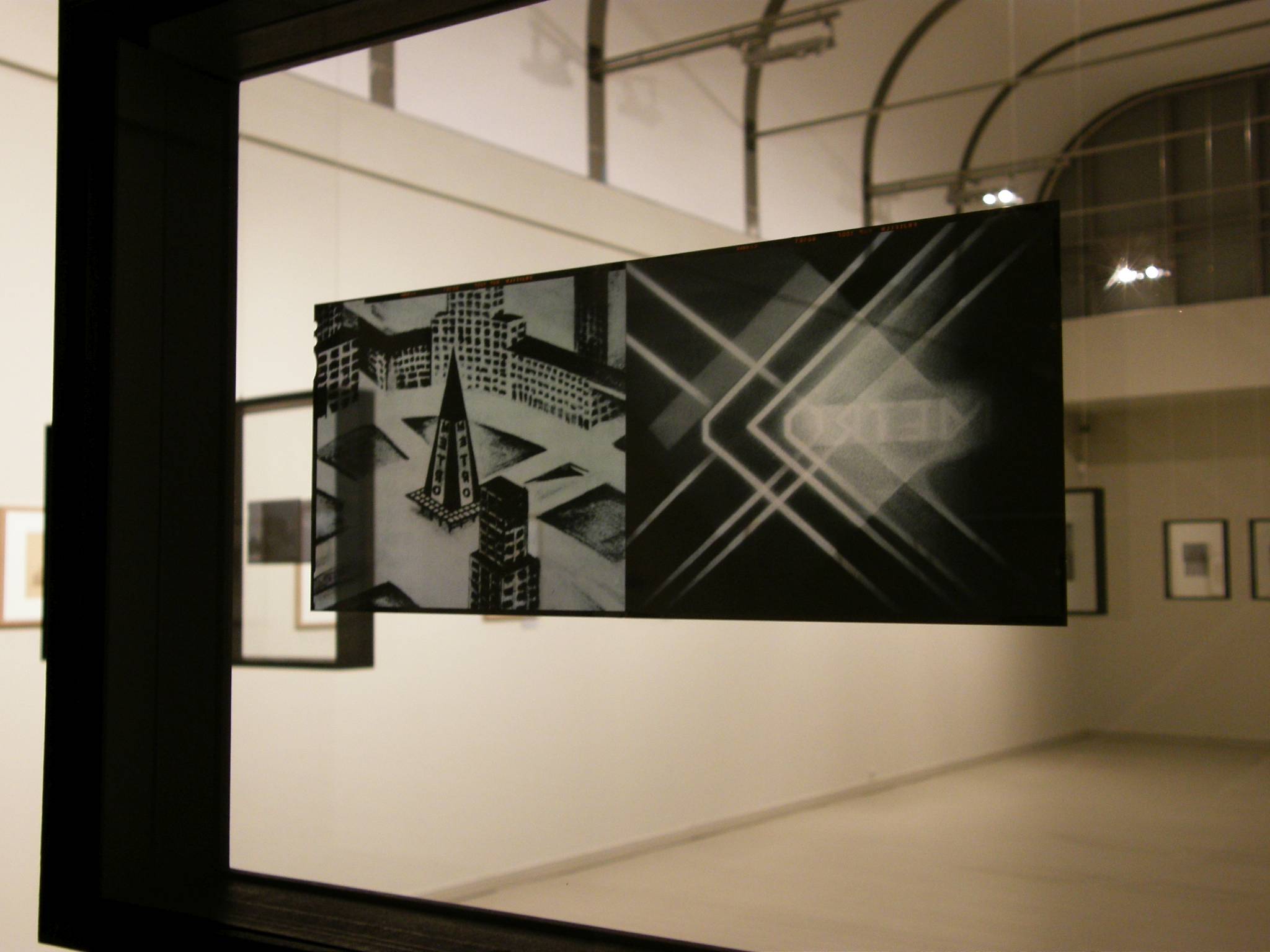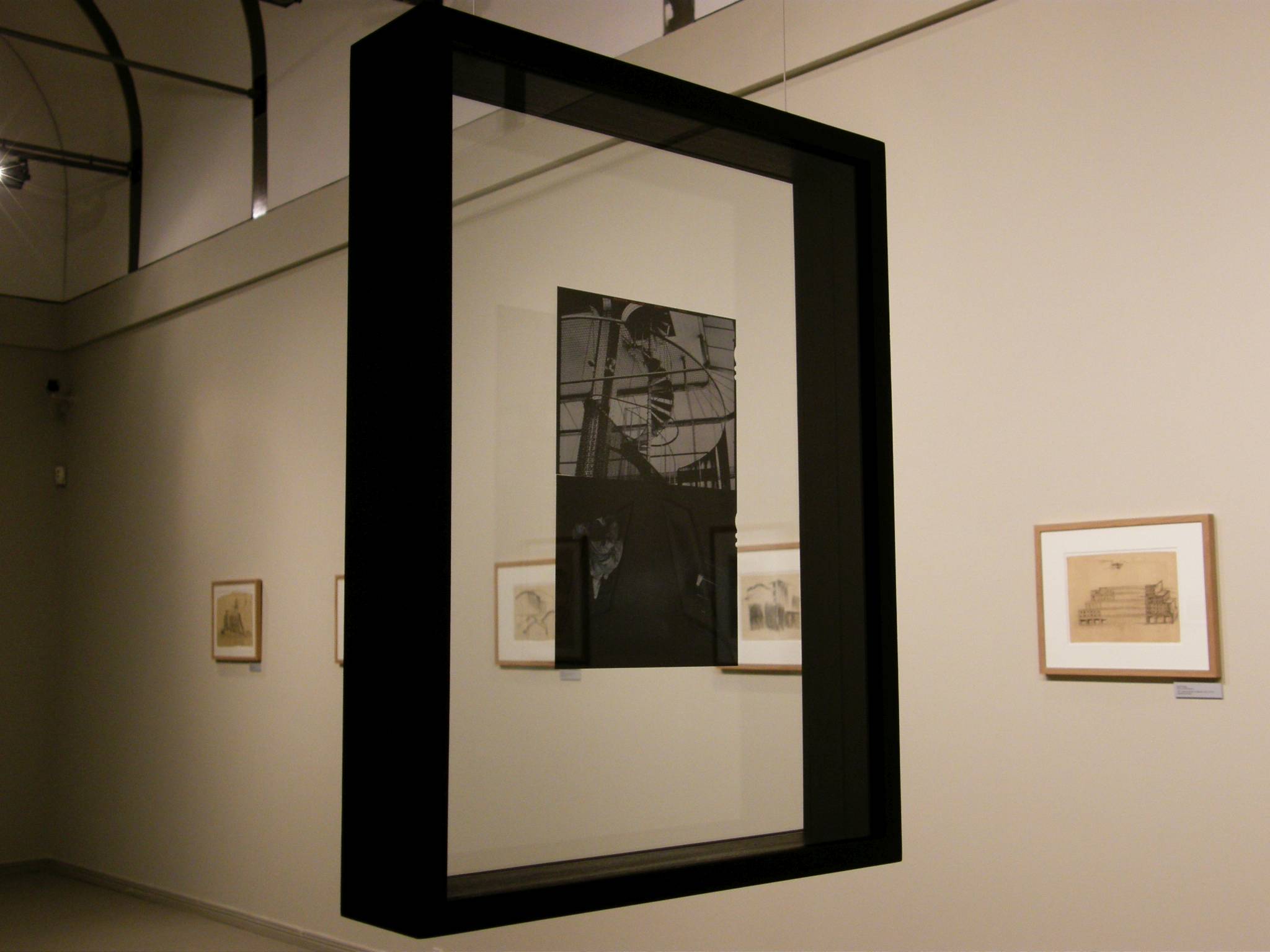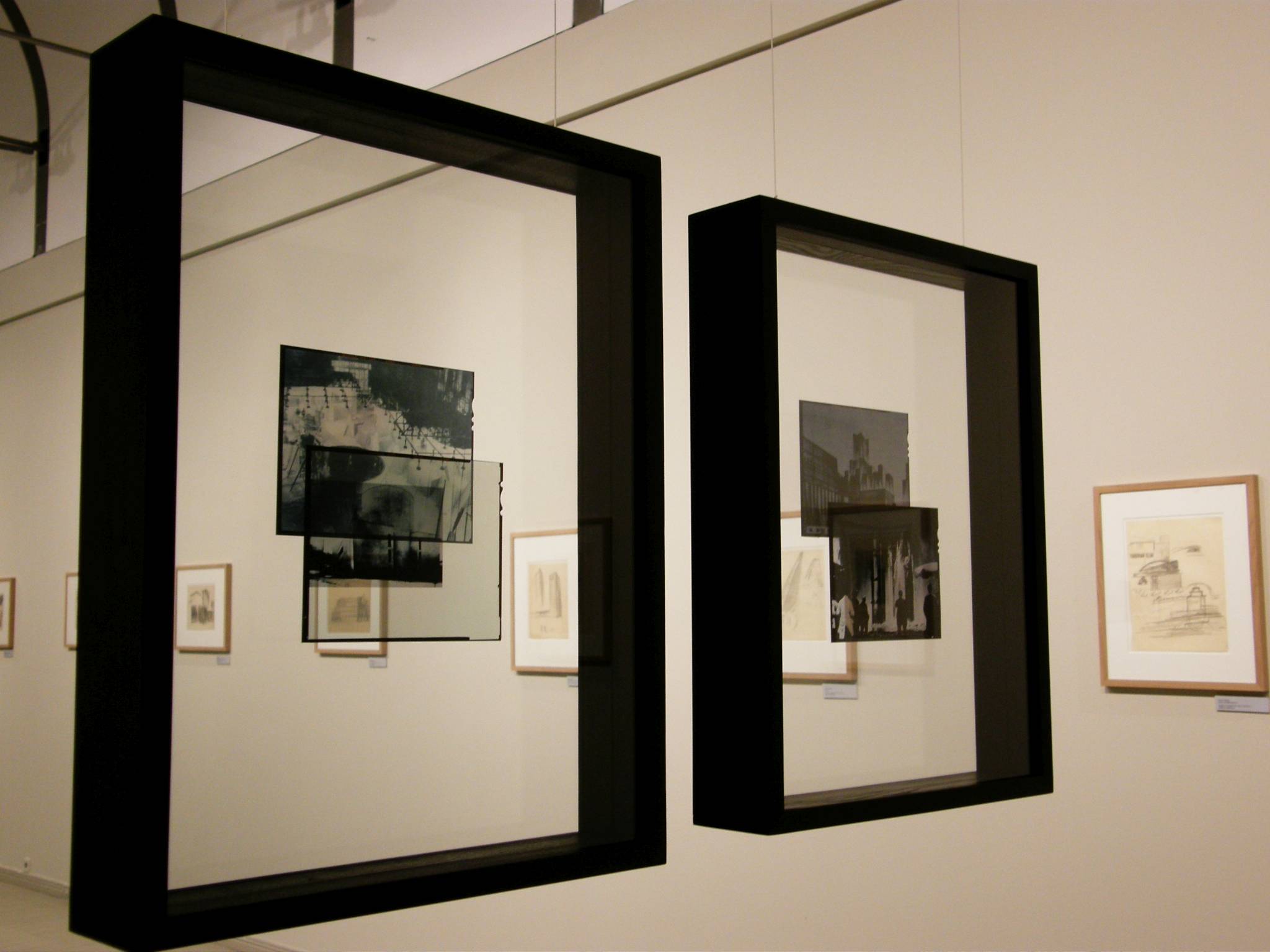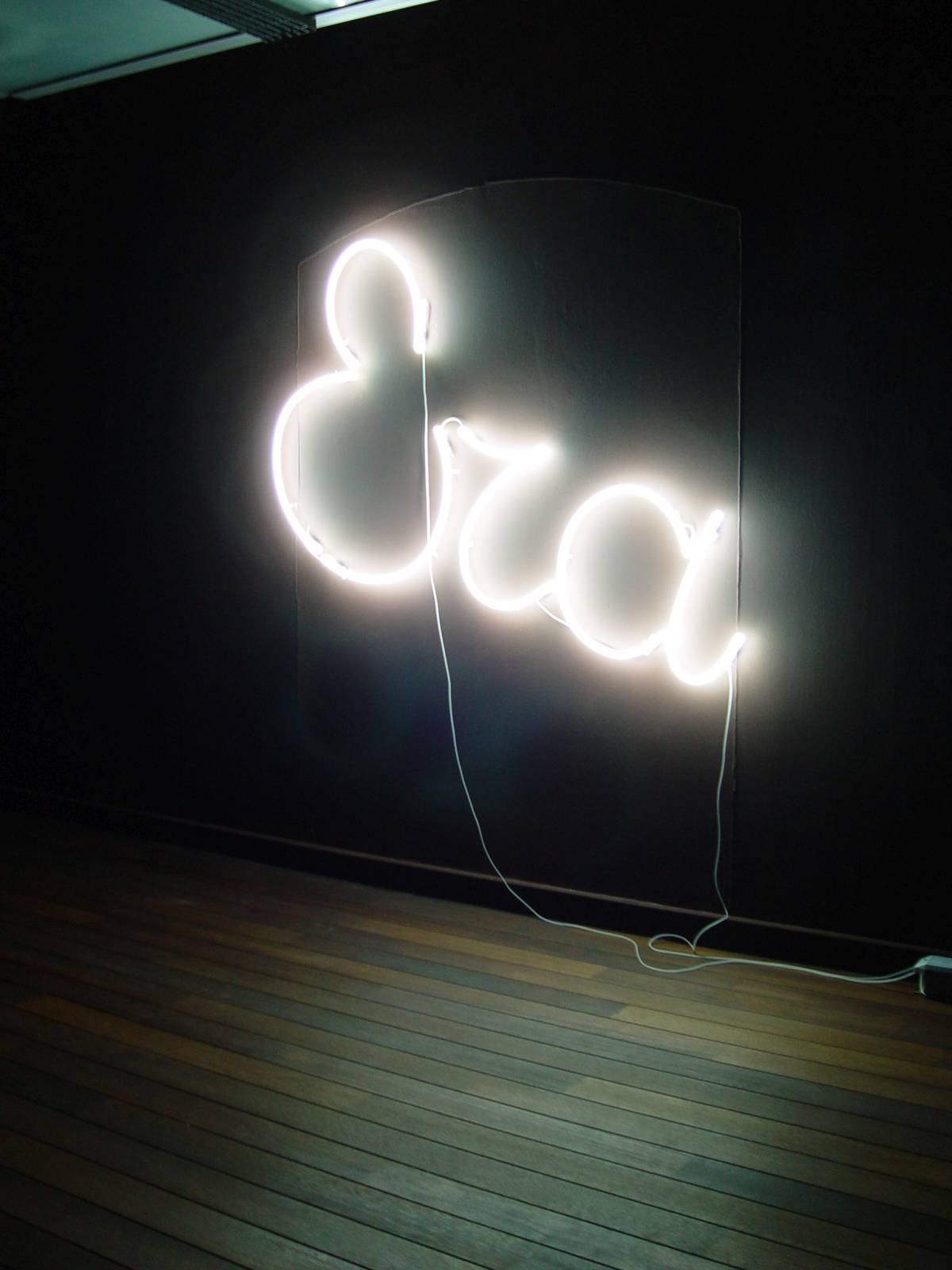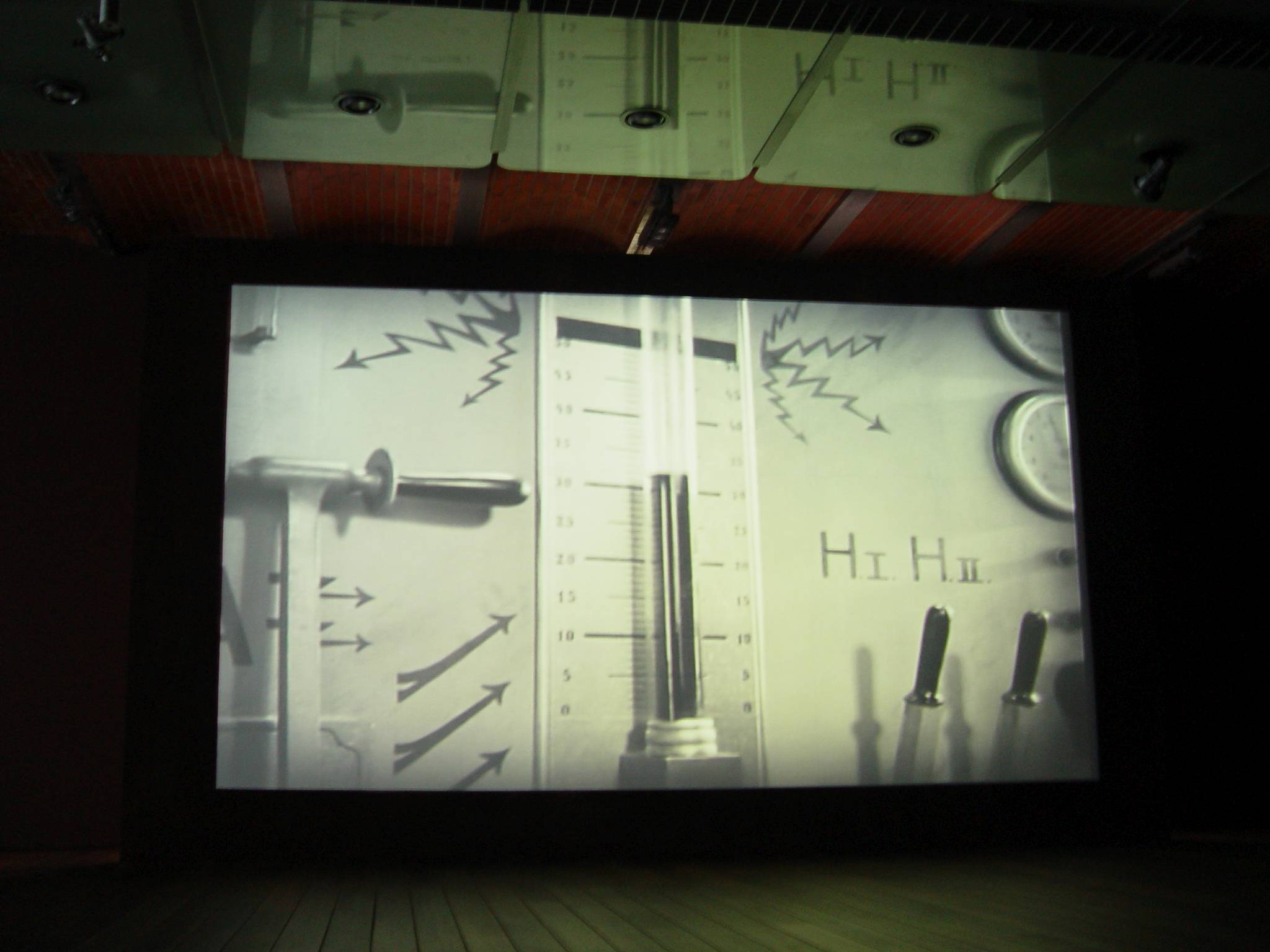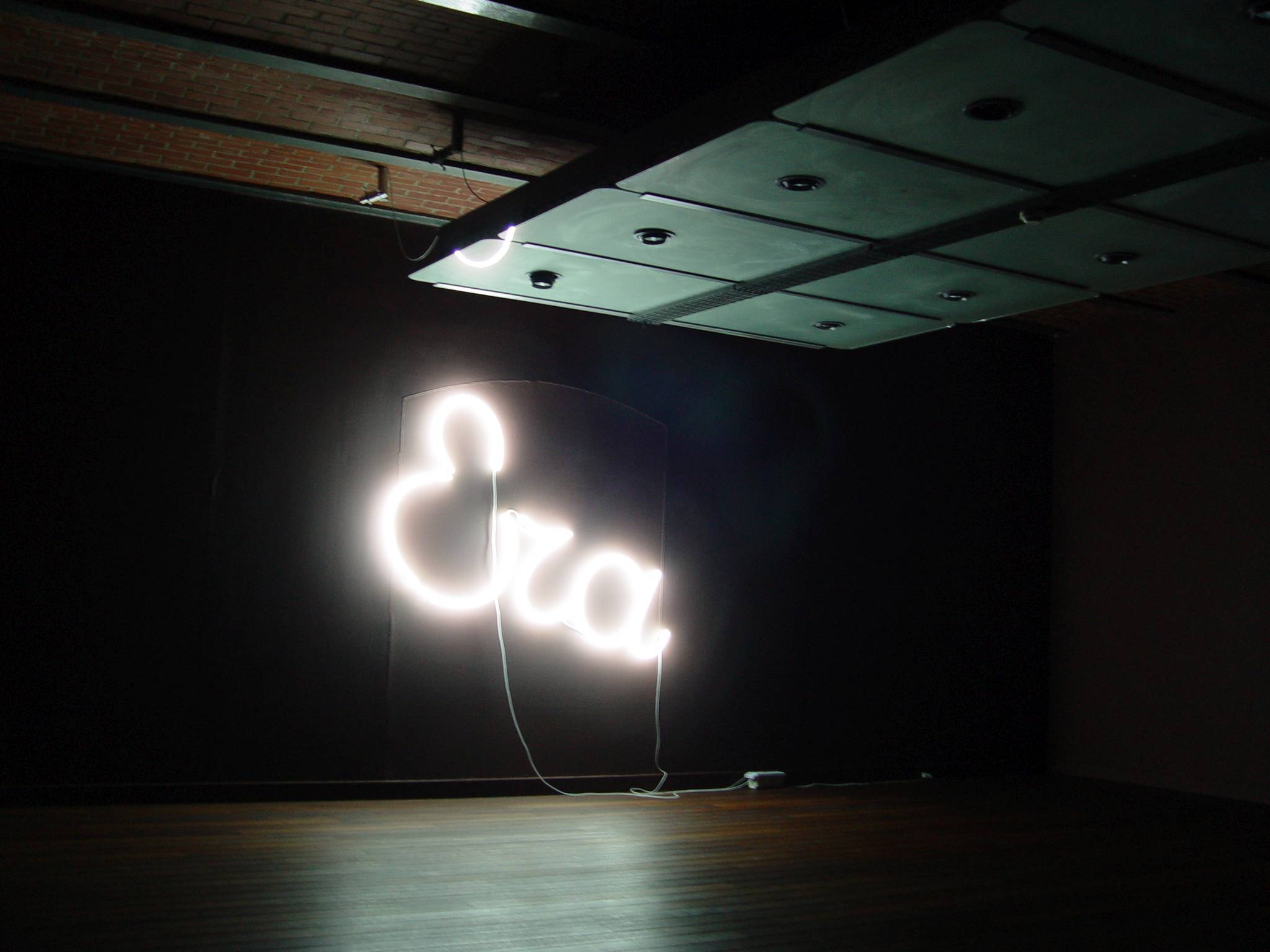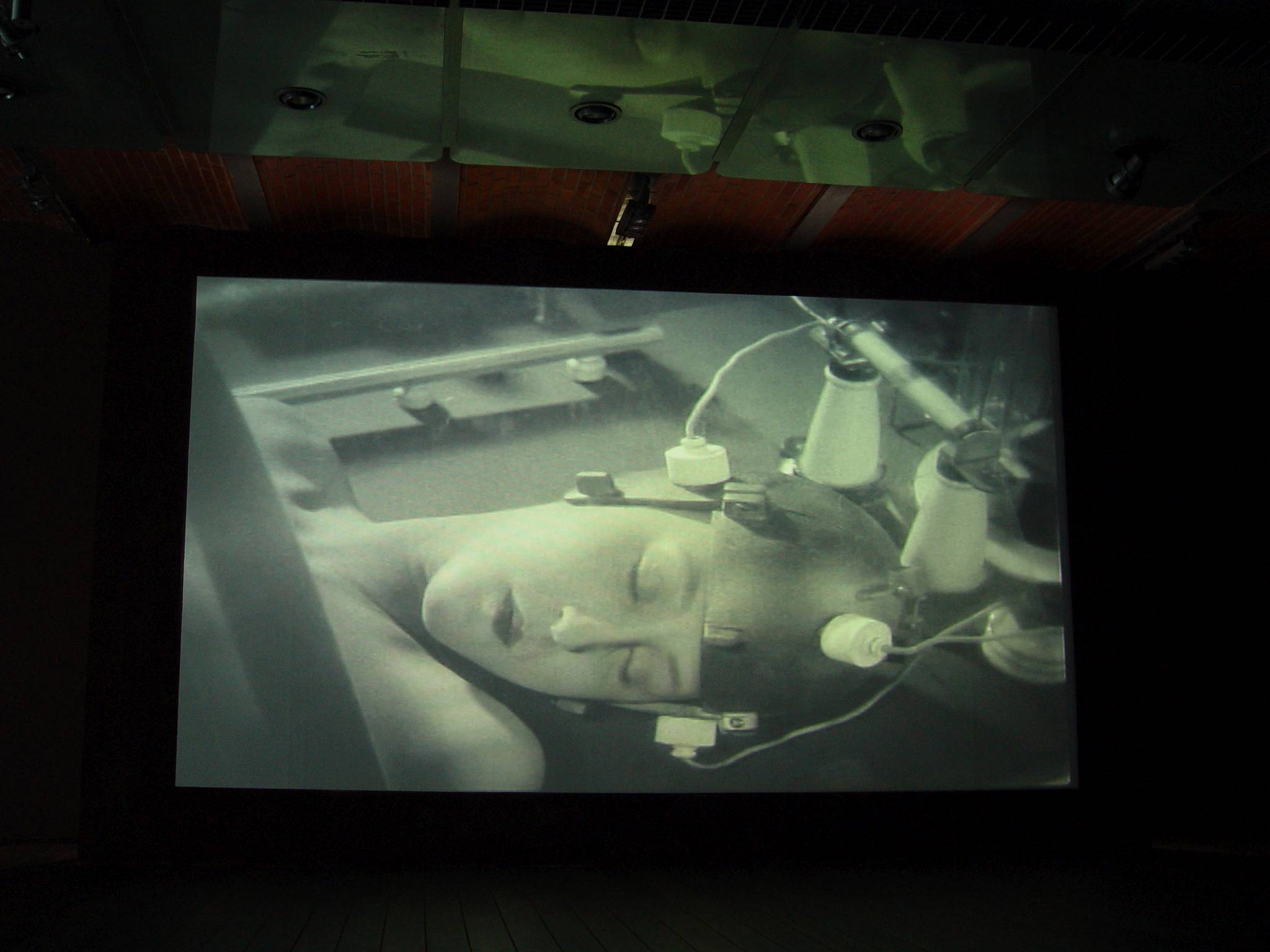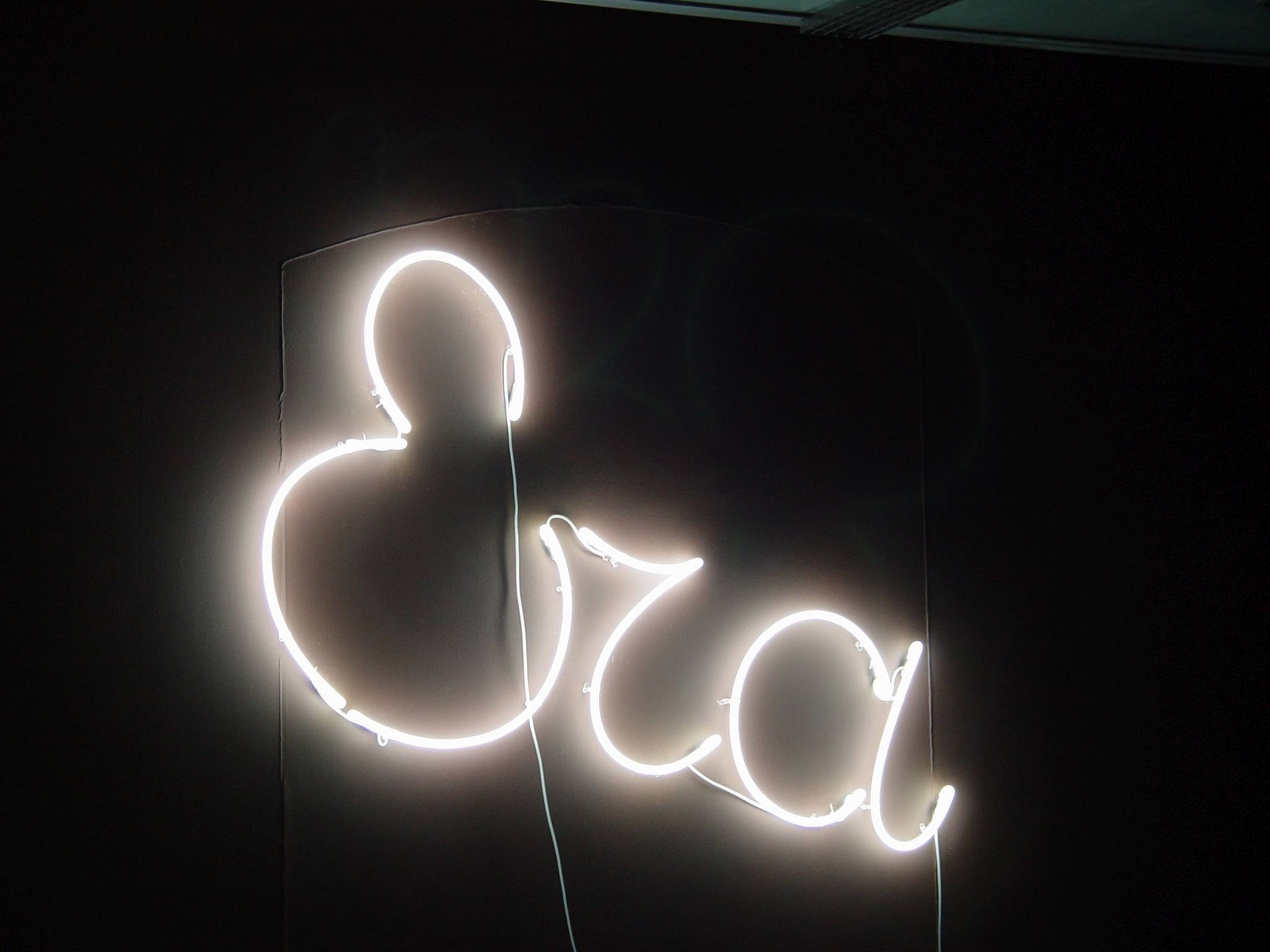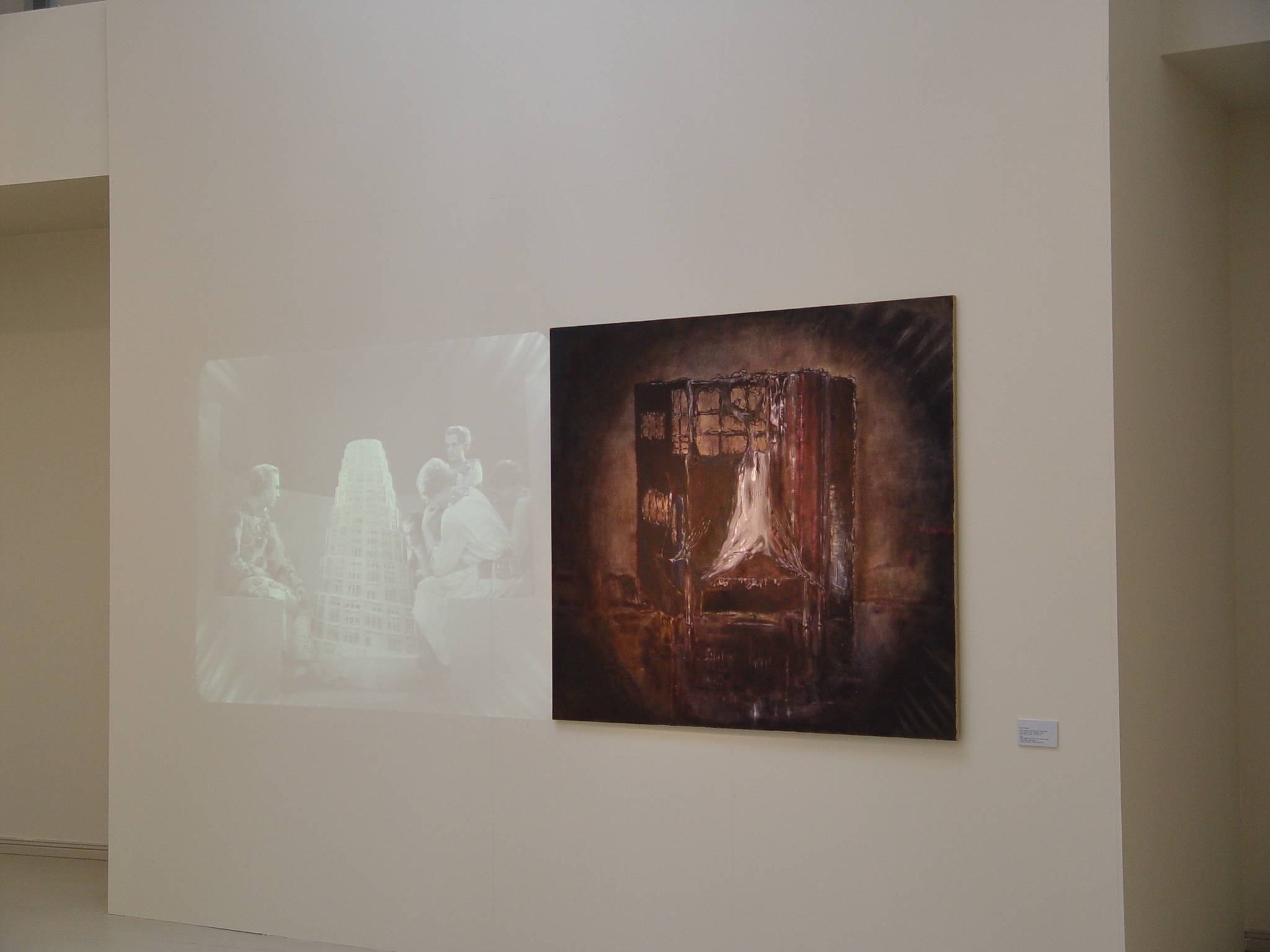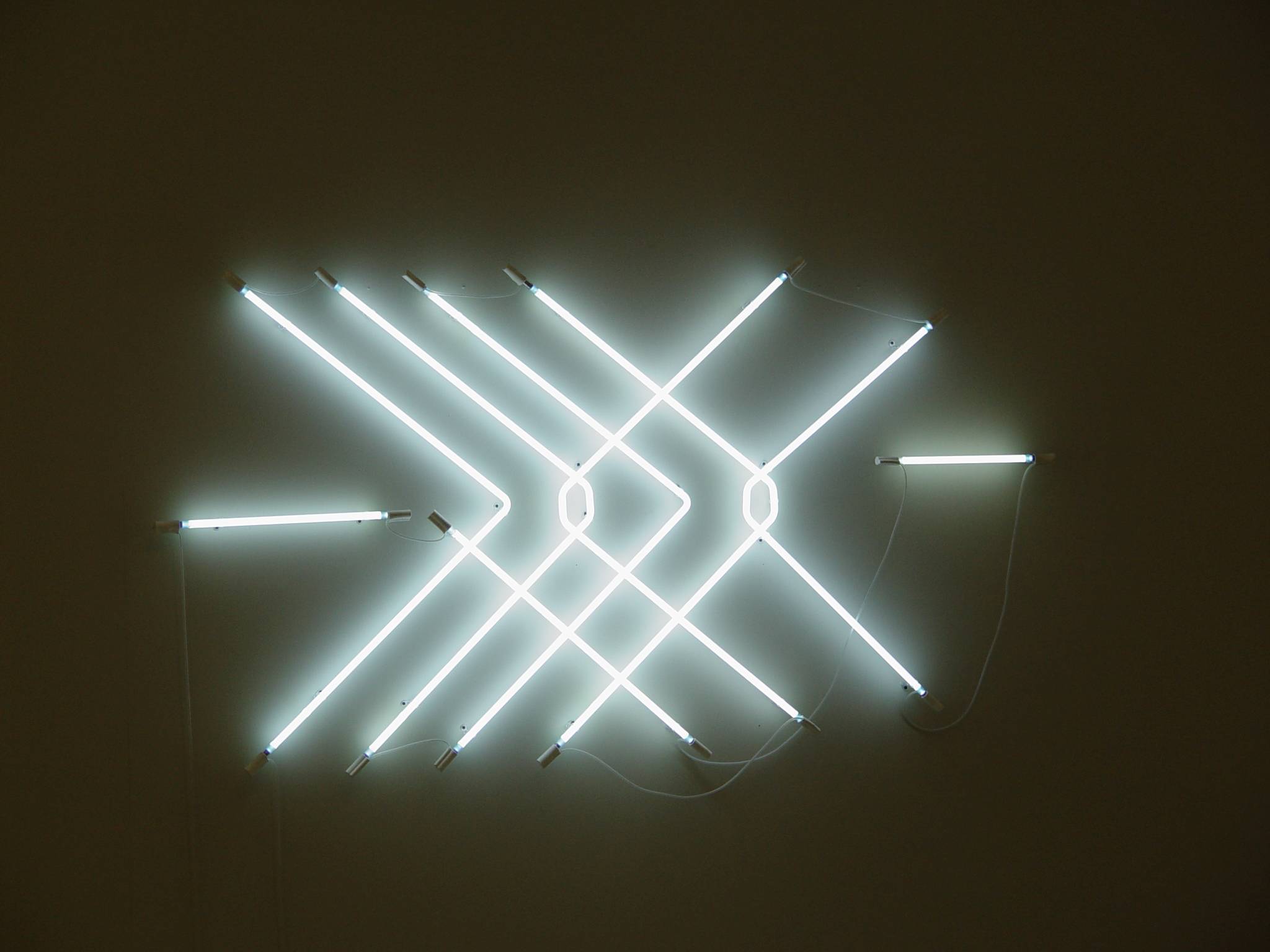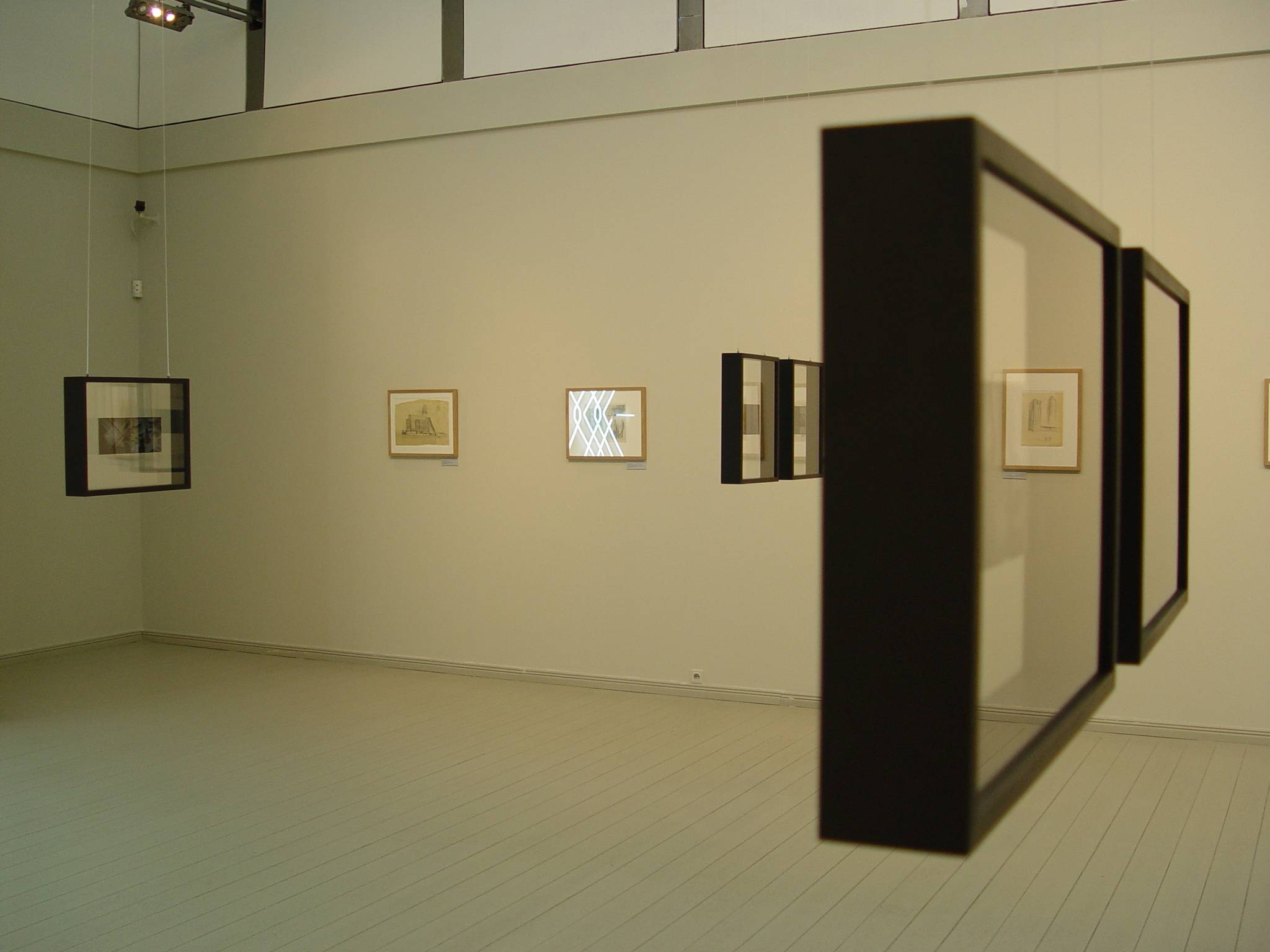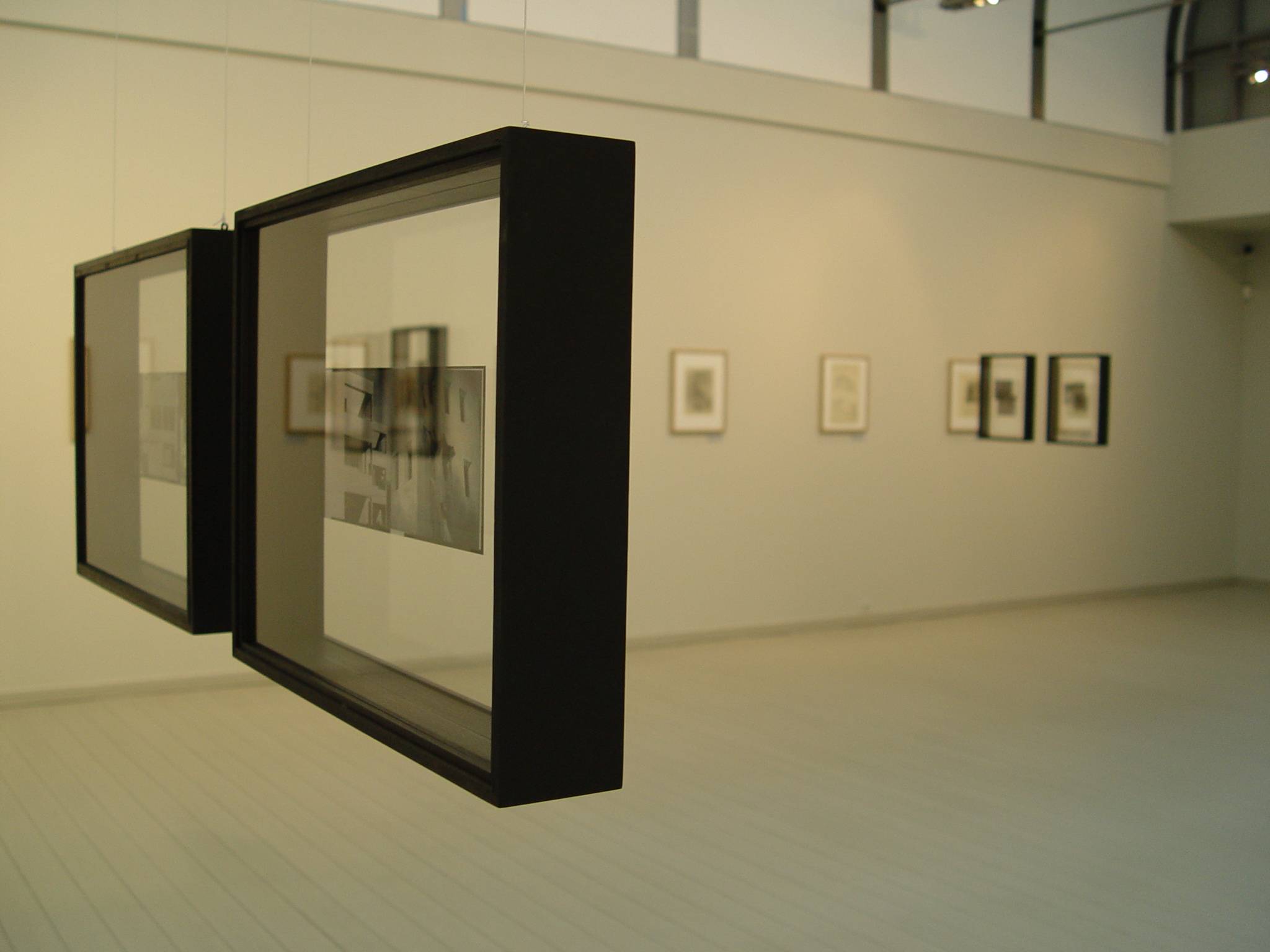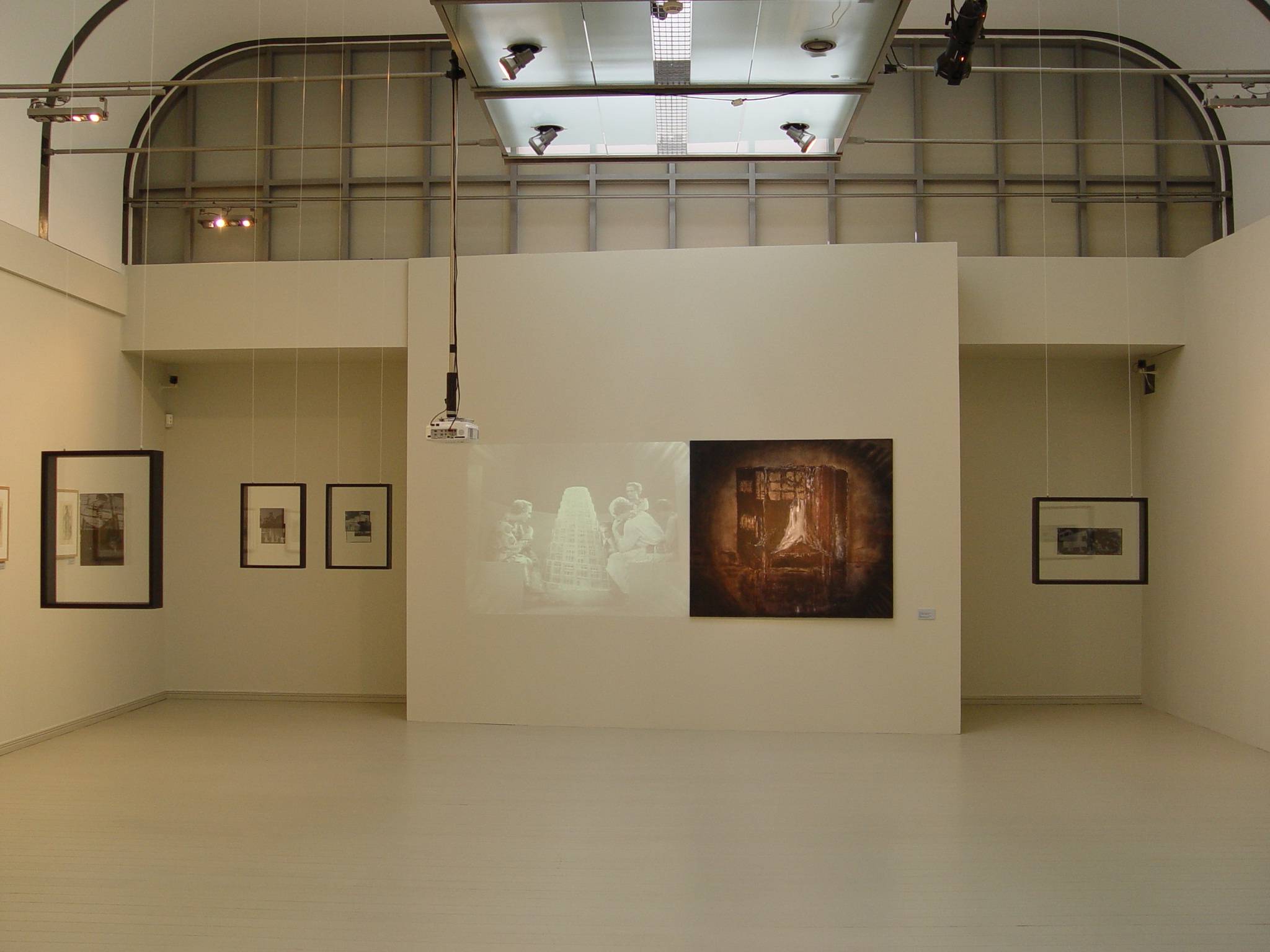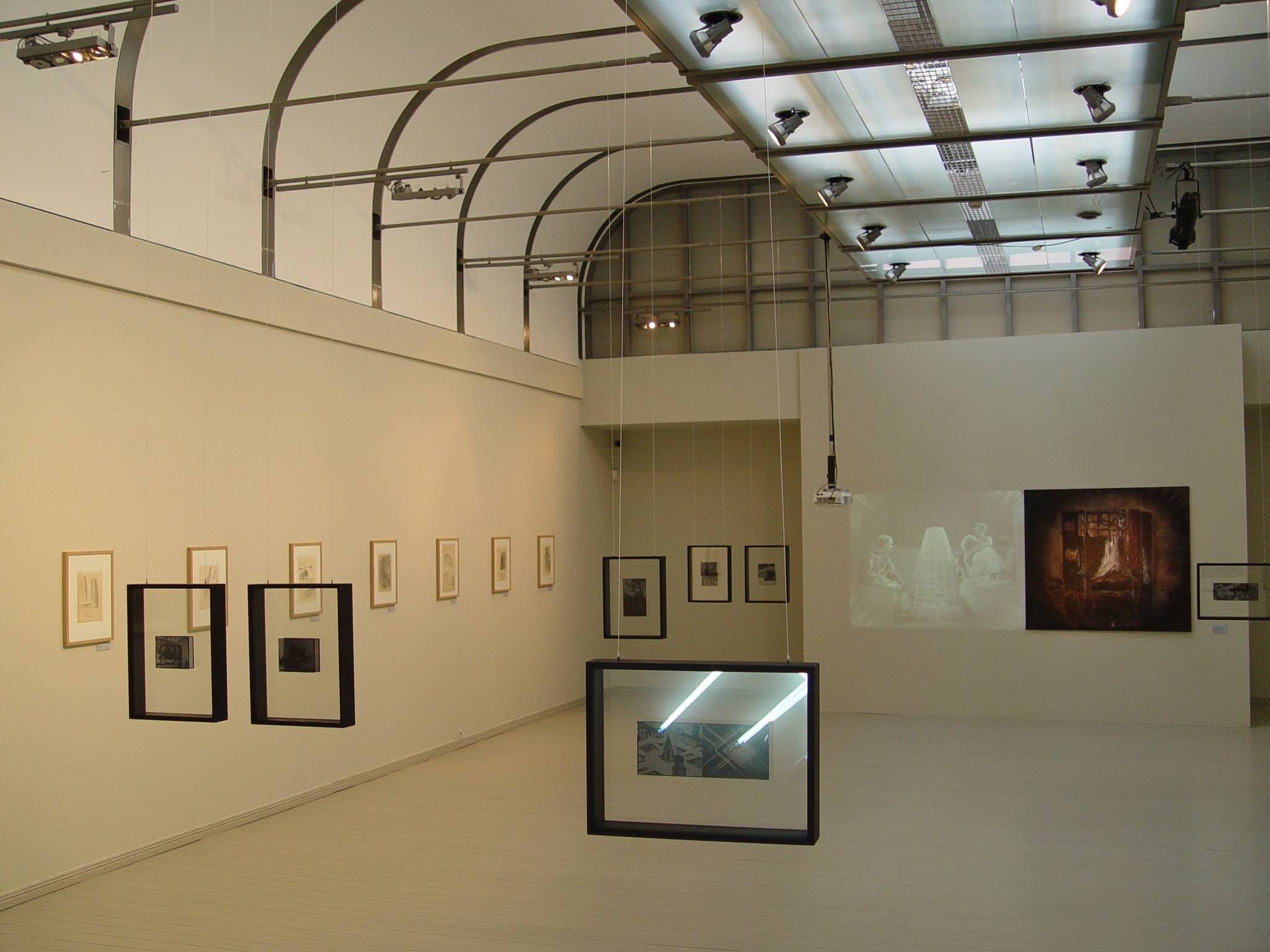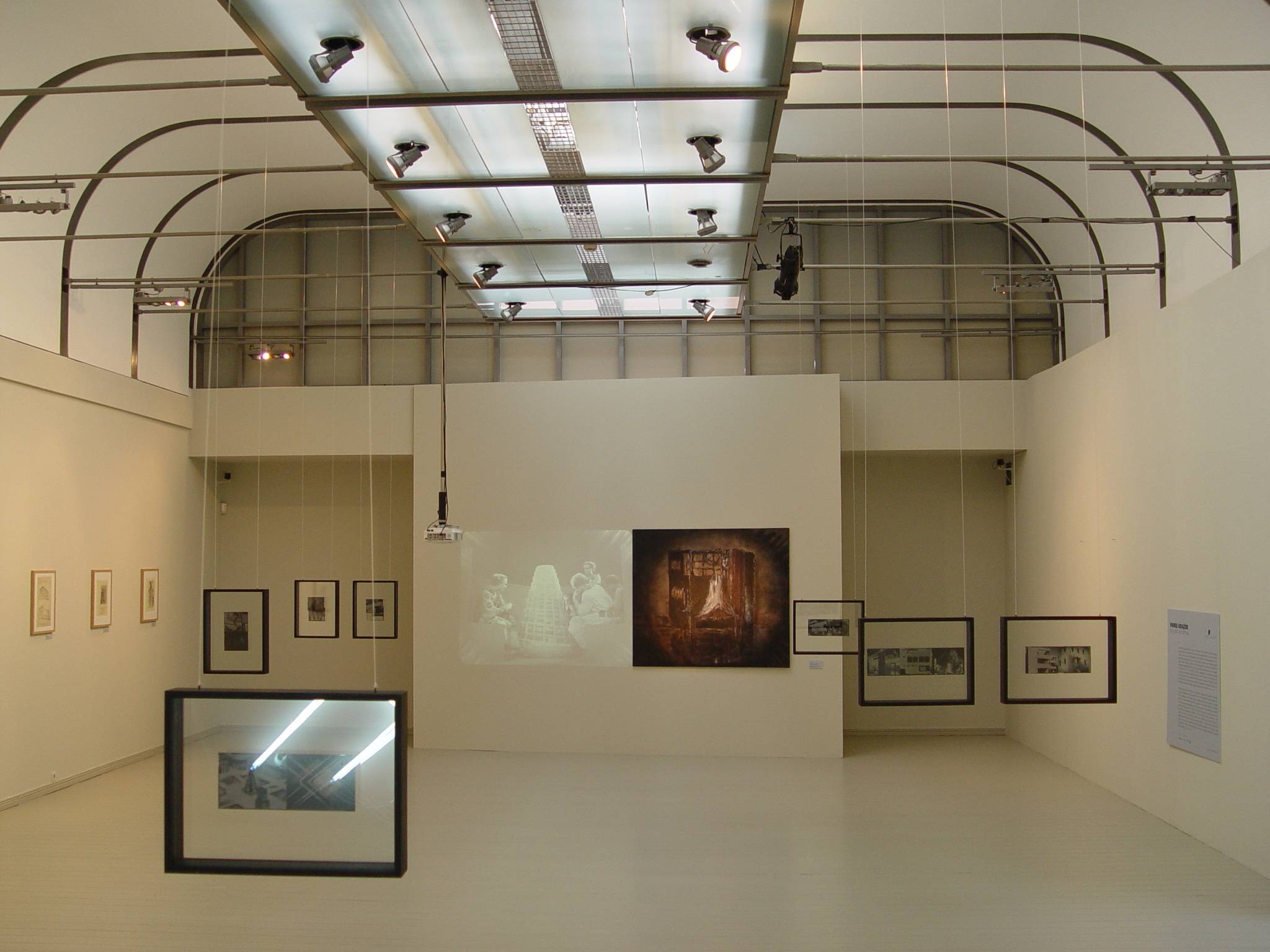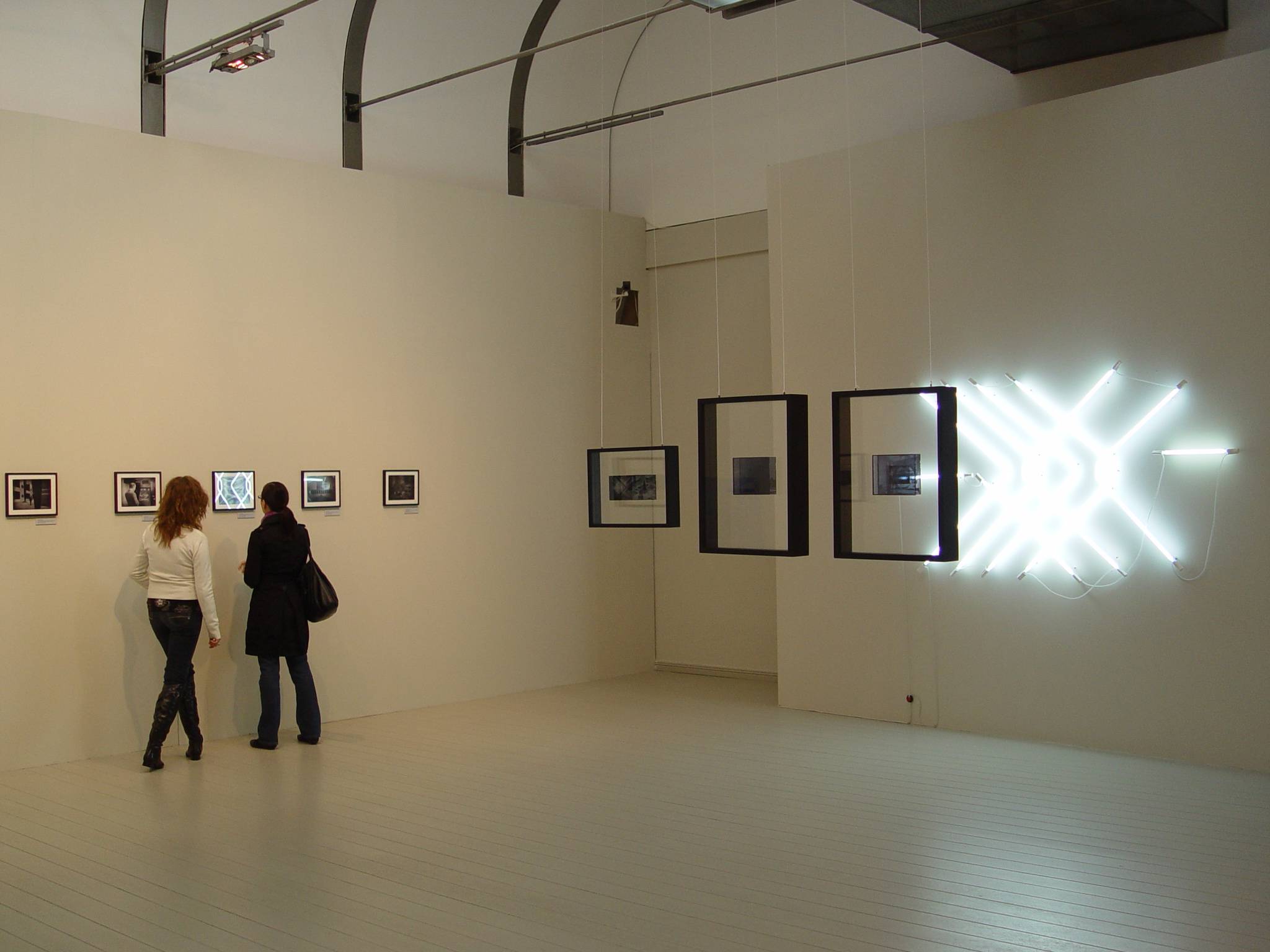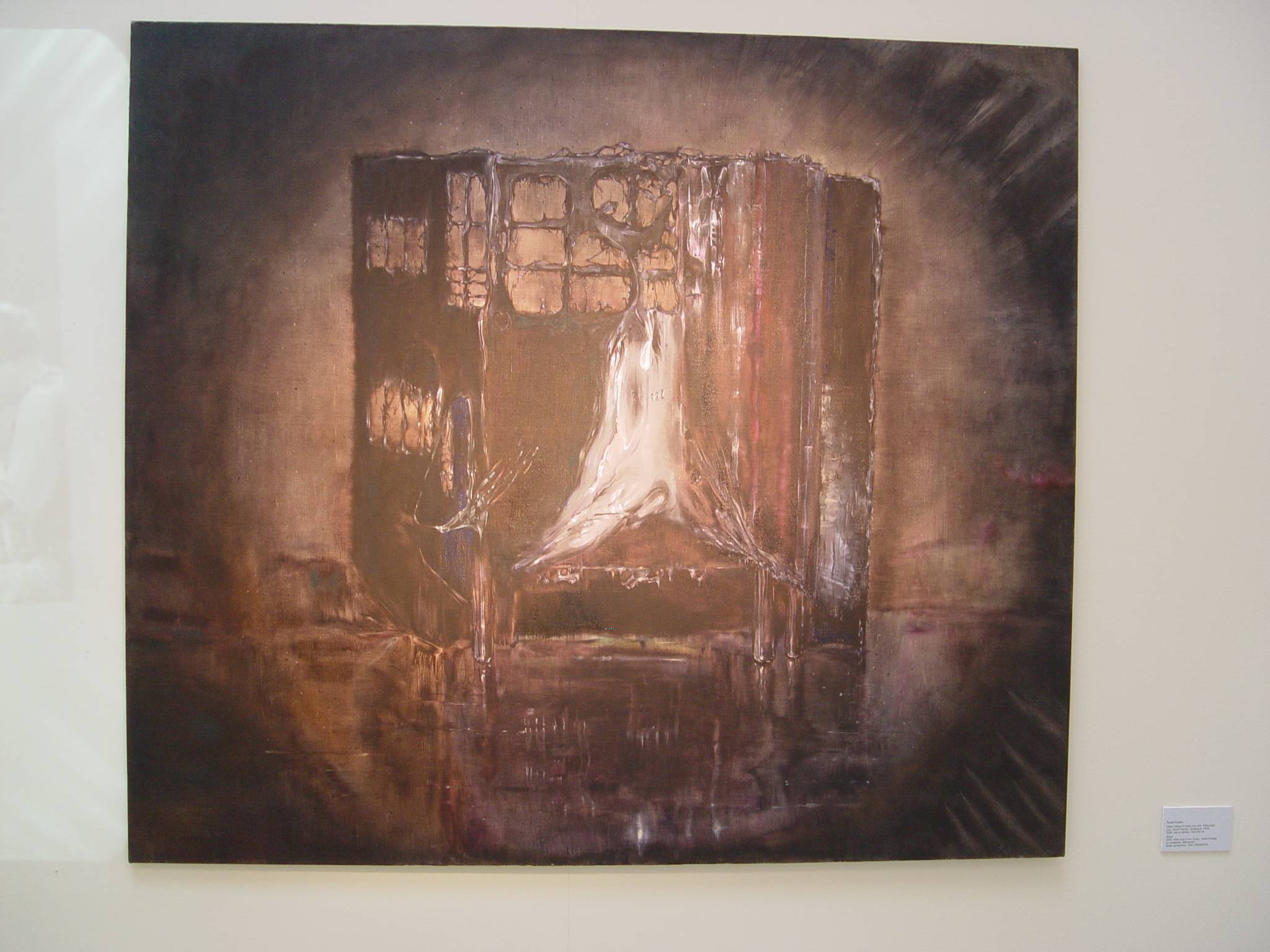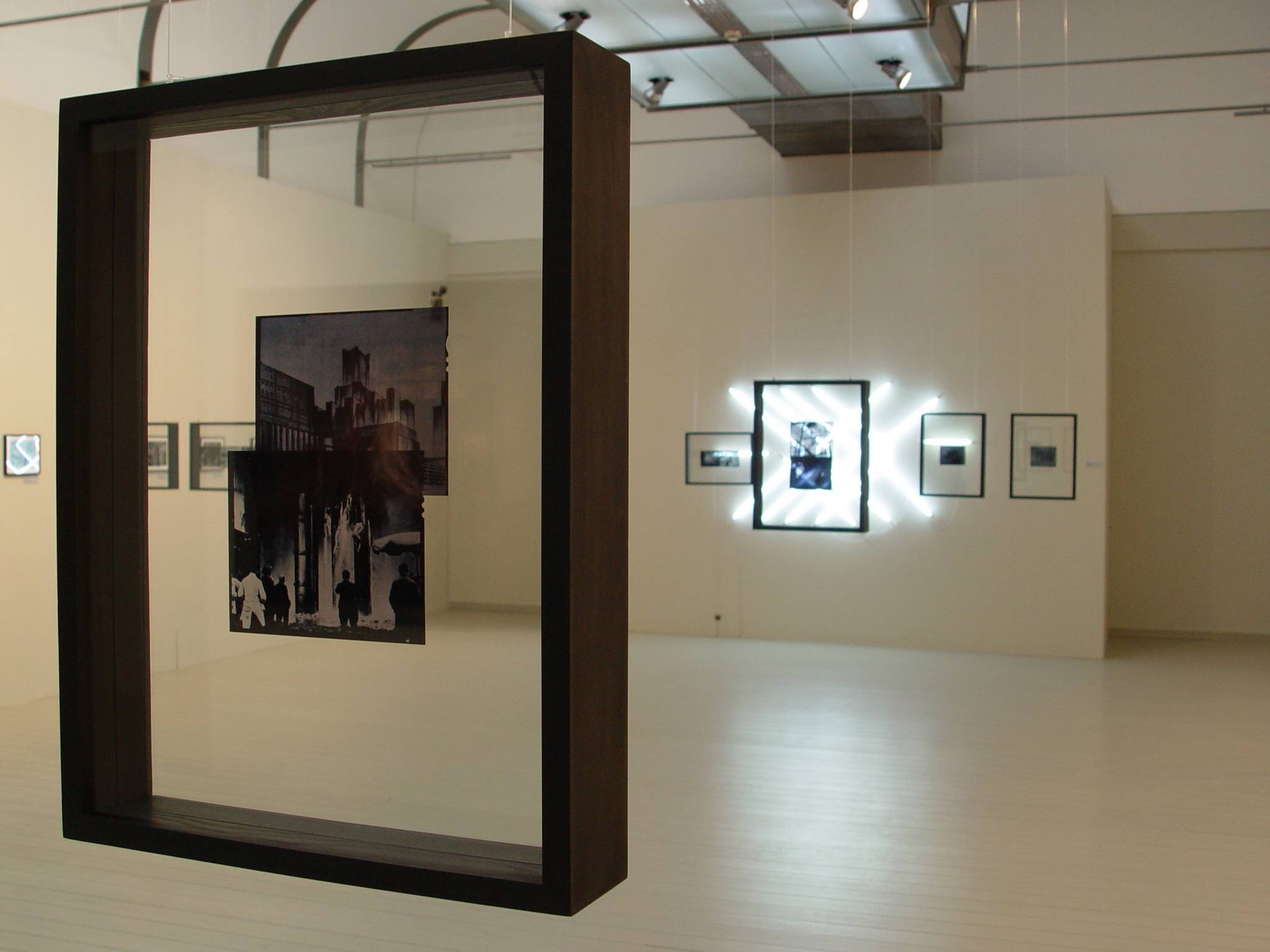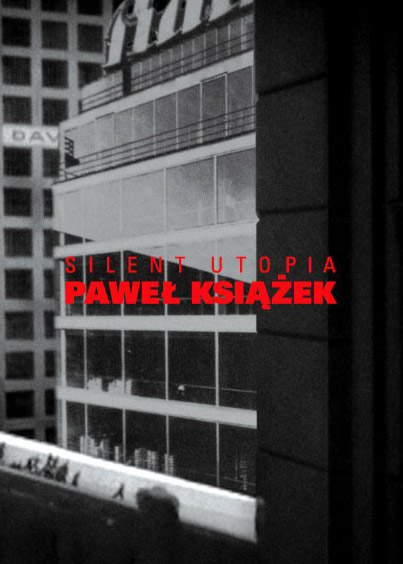Paweł Książek’s project “Silent Utopia” is a fantasy which merges Eastern European modernism with German expressionist silent cinema. The work made reference to the film Metropolis and Eastern European architecture of the Interwar period. Paweł Książek’s installation was contrasted against vintage documents from the 20s and 30s, such as plans and studies made for the architectural and scenographic realizations of one of the major German architects of that period, Hans Polezig, and accompanied by objects of historical value related to German cinema of the 1920s.
The accompanying events program included: a meeting with the artist and the exhibition curators, a screening of the original film “Metropolis” and lectures by Prof. Marek Hendrykowski.
Exploring the ties between modernist architecture and cinema, Paweł Książek analyzes hypothetical proofs that would indicate the existence of a universal aesthetic sensitivity common to artists of the day. Based on his studies of the aesthetics of that period, he speculates about how film could look, and how the images of its single frames would be altered if as scenography we used Czech, Hungarian or Polish architecture from the times before the global catastrophe. What would it look like if Metropolis was shot in Prague with the modernist Bata shoe shop as the background (Ludvik Kysela, Prague 1929)? Could Café Era in Brno (Jozsef Kranz, 1927) replace the building with the neon “Era” sign from one of the film’s night scenes? Finally, why wasn’t the film actually shot on Warsaw’s “Future Street” (“Ulica Przyszłości”) designed by Lech Niemojewski in 1925? As it appears, the connections between cinema and architecture, which Książek so ardently pursues, are not pure speculations – in fact they do have a historical explanation. There is no denying that architecture is of primary importance to the film, and Fritz Lang himself admits that his vision of architectural future was directly inspired by New York’s skyline, which he saw on one of his journeys: I saw a street that by means of neon lights was lit as brightly as if it were day. (…) The skyscrapers functioned as an opulent theater-set hung to dazzle, dispel, and hypnotize from a dismal sky – he wrote. German expressionist cinema perfectly shows how film could and did become an area in which the architects of the 1920s and 1930s could freely experiment and carry out even the most utopian visions.
The exhibition featured original sketches by Hans Polezig, which he made to Paul Wegener’s Golem, another masterpiece of German silent film. Looking at them, one can notice an interplay between a futuristic extravaganza generated in an architect’s imagination and scenographic artificiality. It is surprising that out of all other available media, it is architecture that turns out to be a perfect tool for creating visions of the future: not only in cinema – in science fiction movies – but also in real life. The architects of the 1920s and 1930s also had their dream visions of mankind, of society, of ideal cities. Both visions – the fictitious (Lang’s film was a cinema flop) and the real, despite the big promises they offered, soon turned out to be nothing but failures, silent utopias of unfulfilled dreams.

